- Reviews / Why join our community?
- For companies
- Frequently asked questions


Design Thinking, Essential Problem Solving 101- It’s More Than Scientific
The term “ Design Thinking ” dates back to the 1987 book by Peter Rowe; “Design Thinking.” In that book he describes the way that architects and urban planners would approach design problems. However, the idea that there was a specific pattern of problem solving in “design thought” came much earlier in Herbert A Simon’s book, “The Science of the Artificial” which was published in 1969. The concept was popularized in the early 1990s by Richard Buchanan in his article “ Wicked Problems in Design Thinking”.
Ralph Caplan, the design consultant, sums up the need for design thinking with; “Thinking about design is hard, but not thinking about it can be disastrous.”
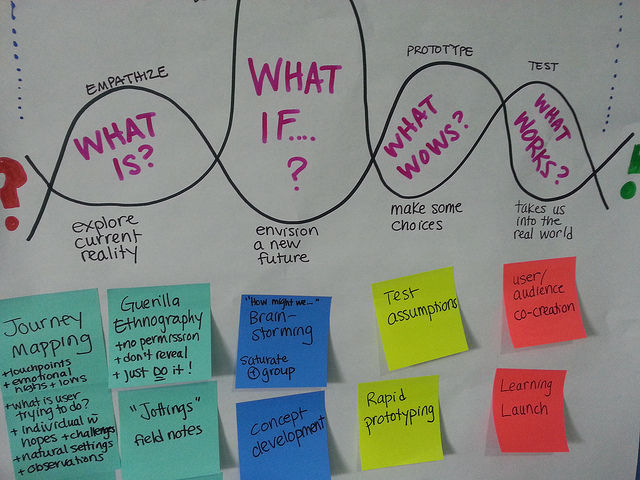
Author/Copyright holder: Christine Prefontaine. Copyright terms and licence: CC BY-SA 2.0
A simple overview of design thinking as a problem solving process.
Problem-Solving and Two Schools of Thought
Design thinking is concerned with solving problems through design. The idea being that the future output of the process will provide a better answer than the one already available or if nothing is available – something entirely new.
It is an unconstrained methodology where it is possible that the designer (or design team) will work on many possible solutions at once. It enables designers to consider the problem in many different ways and speculate on both the past and future of the problem too.
This is in contrast to the scientific method of problem solving which requires a highly-defined problem which focuses on delivering a single solution.
This difference was first noted by Brian Lawson, a psychologist, in 1972. He conducted an experiment in which scientists and architects were asked to build a structure from colored blocks. He provided some basic rules for the project and observed how they approached it. The scientists looked to move through a simple series of solutions based on the outcome and entire rule set. The architects, in contrast, simply focused on the desired end-state and then tested to see if the solution they had found met the rules.
This led to the idea that scientists solve problems by a process of analysis, whilst designers solve problems by synthesis. However, later evidence suggests that designers apply both forms of problem solving to attain “design thinking”.
They do this via a process of divergent thinking . A designer will examine as many possible solutions at the beginning of a process as they can think of – then they will apply the scientific side ( convergent thinking ) to narrow these solutions down to the best output.
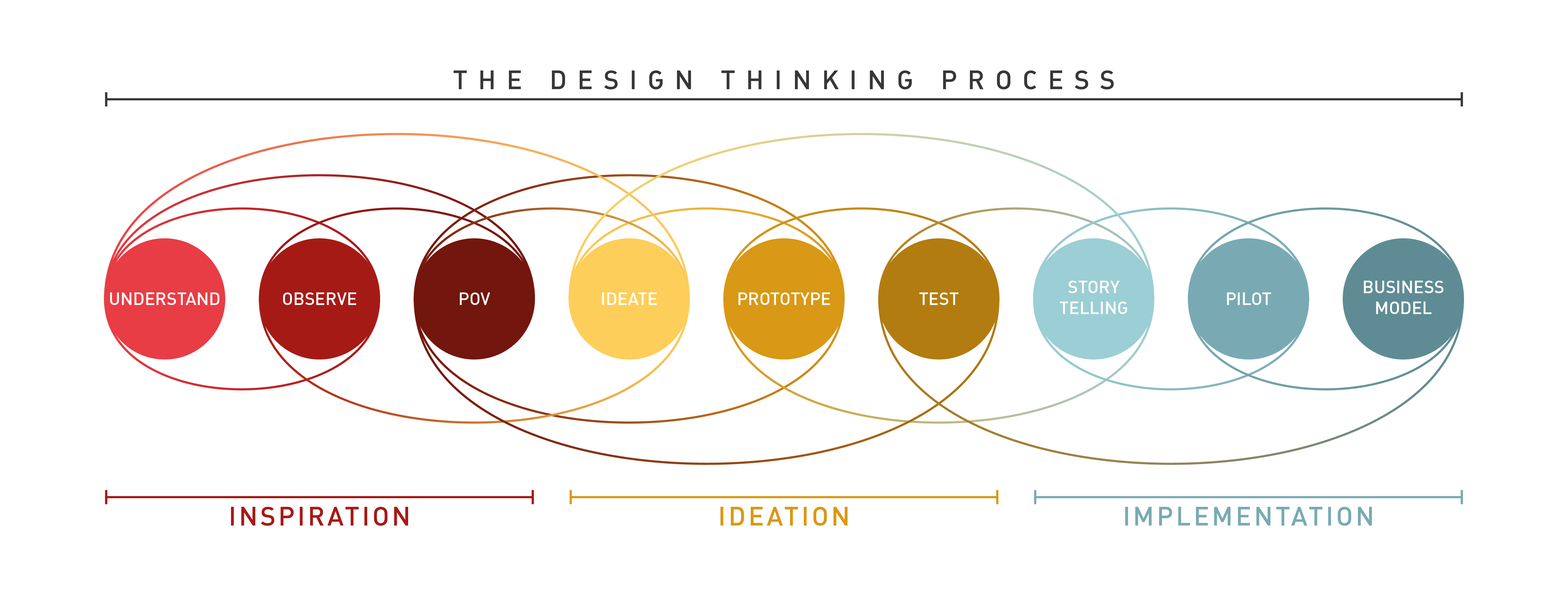
Design thinking can be as simple or as complex as the business and users require. This IDEO process can be seen as a 3 part process or a 9 part process .
The Design Thinking Process
Design thinking is essentially a process which moves from problem to solution via some clear intermediate points. The classic approach, as proposed by Herbert A Simon, is offered here:
- Definition – where the problem is defined as best as possible prior to solving it
- Research – where the designers examine as much data as they feel necessary to be able to fully contribute to the problem solving process
- Ideation – where the designer commences creating possible solutions without examining their practicality until a large number of solutions has been proposed. Once this is done, impractical solutions are eliminated or played with until they become practical.
- Prototyping – where the best ideas are simulated in some means so that their value can be explored with users
- Choosing – where the best idea is selected from the multiple prototypes
- Implementing – where that idea is built and delivered as a product
- Testing – where the product is tested with the user in order to ensure that it solves the original problem in an effective manner
There are many other design thinking processes outlined in literature – most of which are a truncated version of the above process combining or skipping stages.
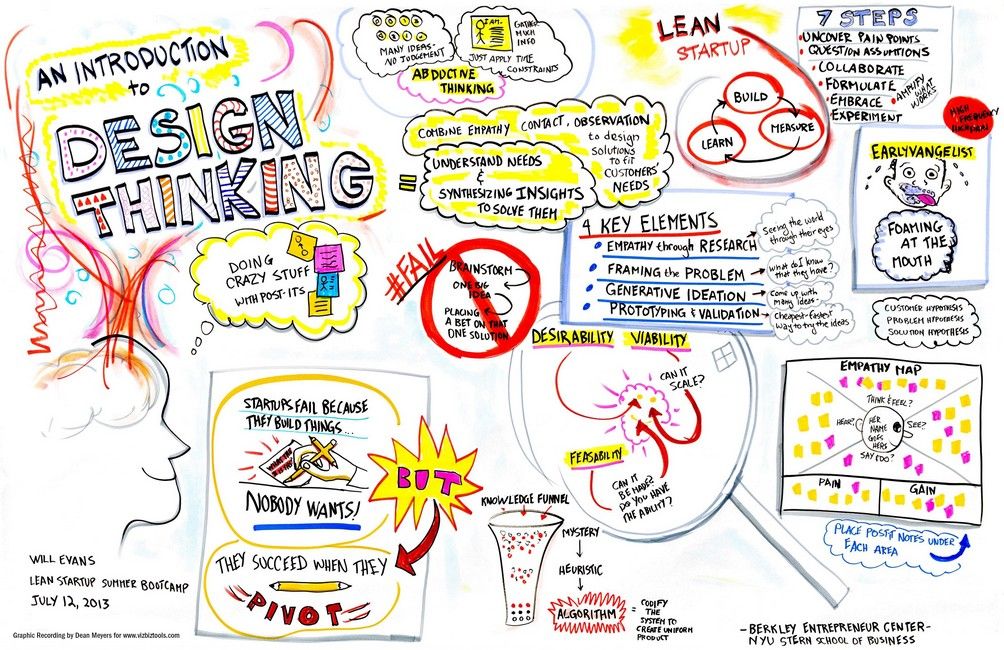
Here we see a more complex interpretation of the design thinking process and how it fits into the larger business sphere.
The Principles of Design Thinking
In the book, Design thinking: Understand, Improve Apply, Plattner and Meinel offer four underlying principles for design thinking:
- Human – all design is of a social nature
- Ambiguity – design thinking preserves and embraces ambiguity
- Re-design – all design processes are in fact re-design of existing processes
- Tangibility – the design process to make something tangible will facilitate communication of that design
It is also worth noting that design thinking functions independently of the design methods employed in any given design process. Design methods are the tools employed (such as interviews, user research , prototypes, etc.) and the assumption is that there are many paths that may be used (e.g. different sets of methods applied) to reach the same “best” result.
Visuals and Design Thinking
Firstly, it is important to acknowledge that design thinking is not about graphic design per se. However, designers are often used to communicating their thinking visually and drawings, sketches , prototypes, etc. are often used to convey the ideas created within a design thinking process.
In fact, ideas which are hard to express easily in words are often given shape in the form of visual metaphors. Design thinking thus easily incorporates abstract thought processes – something that scientific thinking may find more challenging to accommodate.
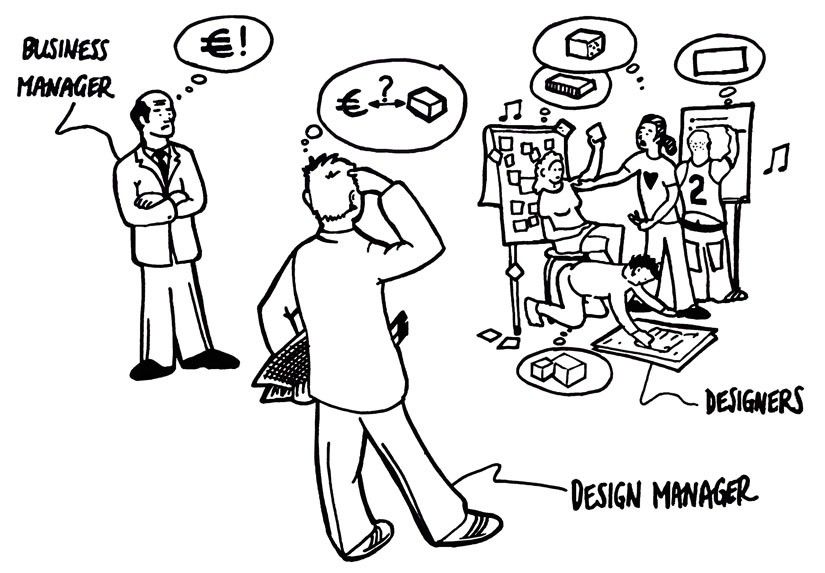
Visual representations of how those involved in the design process might be thinking about a problem.
The Take Away
Design thinking is a process by which designers approach problem solving. It incorporates analytical, synthetic, divergent and convergent thinking to create a wide number of potential solutions and then narrow these down to a “best fit” solution. There are many ways to use a design thinking process to incorporate different methodologies to still reach the same end point. Designers must solve problems in order to add value through design.
Richard Buchanan’s original article "Wicked Problems in Design Thinking," was published in Design Issues , vol. 8, no. 2, Spring 1992.
Peter Rowe’s book from 1987 Design Thinking was published byCambridge: The MIT Press. ISBN 978-0-262-68067-7.
Herbert A Simon’s book from 1969 The Sciences of the Artificial . Was published by Cambridge: MIT Press.
Plattner, Hasso; Meinel, Christoph; Leifer, Larry J., eds. (2011). Design thinking: understand, improve, apply . Understanding innovation . Berlin; Heidelberg: Springer-Verlag. pp. xiv–xvi.doi:10.1007/978-3-642-13757-0. ISBN 3642137563.
This fascinating case study looks at how IBM plans to bring design thinking to large scale businesses - http://www.wired.com/2016/01/ibms-got-a-plan-to-bring-design-thinking-to-big-business/
See how Pepsi’s CEO, Indra Nooyi, implemented design thinking in her organization - https://hbr.org/2015/09/how-indra-nooyi-turned-design-thinking-into-strategy
Harvard Business Review examines design thinking and how it translates into action here - https://hbr.org/2015/09/design-for-action
Hero Image: Author/Copyright holder: Wikimedia Deutschland e. V. Copyright terms and licence: CC BY-SA 4.0
Creativity: Methods to Design Better Products and Services

Get Weekly Design Insights
Topics in this article, what you should read next, what is design thinking and why is it so popular.

- 1.6k shares
Personas – A Simple Introduction

- 1.5k shares
Stage 2 in the Design Thinking Process: Define the Problem and Interpret the Results

- 1.3k shares
What is Ideation – and How to Prepare for Ideation Sessions

- 1.2k shares
Stage 3 in the Design Thinking Process: Ideate

- 4 years ago
Affinity Diagrams: How to Cluster Your Ideas and Reveal Insights

Stage 4 in the Design Thinking Process: Prototype

- 3 years ago
Stage 1 in the Design Thinking Process: Empathise with Your Users

Empathy Map – Why and How to Use It

What Is Empathy and Why Is It So Important in Design Thinking?

Open Access—Link to us!
We believe in Open Access and the democratization of knowledge . Unfortunately, world-class educational materials such as this page are normally hidden behind paywalls or in expensive textbooks.
If you want this to change , cite this article , link to us, or join us to help us democratize design knowledge !
Privacy Settings
Our digital services use necessary tracking technologies, including third-party cookies, for security, functionality, and to uphold user rights. Optional cookies offer enhanced features, and analytics.
Experience the full potential of our site that remembers your preferences and supports secure sign-in.
Governs the storage of data necessary for maintaining website security, user authentication, and fraud prevention mechanisms.
Enhanced Functionality
Saves your settings and preferences, like your location, for a more personalized experience.
Referral Program
We use cookies to enable our referral program, giving you and your friends discounts.
Error Reporting
We share user ID with Bugsnag and NewRelic to help us track errors and fix issues.
Optimize your experience by allowing us to monitor site usage. You’ll enjoy a smoother, more personalized journey without compromising your privacy.
Analytics Storage
Collects anonymous data on how you navigate and interact, helping us make informed improvements.
Differentiates real visitors from automated bots, ensuring accurate usage data and improving your website experience.
Lets us tailor your digital ads to match your interests, making them more relevant and useful to you.
Advertising Storage
Stores information for better-targeted advertising, enhancing your online ad experience.
Personalization Storage
Permits storing data to personalize content and ads across Google services based on user behavior, enhancing overall user experience.
Advertising Personalization
Allows for content and ad personalization across Google services based on user behavior. This consent enhances user experiences.
Enables personalizing ads based on user data and interactions, allowing for more relevant advertising experiences across Google services.
Receive more relevant advertisements by sharing your interests and behavior with our trusted advertising partners.
Enables better ad targeting and measurement on Meta platforms, making ads you see more relevant.
Allows for improved ad effectiveness and measurement through Meta’s Conversions API, ensuring privacy-compliant data sharing.
LinkedIn Insights
Tracks conversions, retargeting, and web analytics for LinkedIn ad campaigns, enhancing ad relevance and performance.
LinkedIn CAPI
Enhances LinkedIn advertising through server-side event tracking, offering more accurate measurement and personalization.
Google Ads Tag
Tracks ad performance and user engagement, helping deliver ads that are most useful to you.
Share Knowledge, Get Respect!
or copy link
Cite according to academic standards
Simply copy and paste the text below into your bibliographic reference list, onto your blog, or anywhere else. You can also just hyperlink to this article.
New to UX Design? We’re giving you a free ebook!

Download our free ebook The Basics of User Experience Design to learn about core concepts of UX design.
In 9 chapters, we’ll cover: conducting user interviews, design thinking, interaction design, mobile UX design, usability, UX research, and many more!
New to UX Design? We’re Giving You a Free ebook!
.css-s5s6ko{margin-right:42px;color:#F5F4F3;}@media (max-width: 1120px){.css-s5s6ko{margin-right:12px;}} Discover how today’s most successful IT leaders stand out from the rest. .css-1ixh9fn{display:inline-block;}@media (max-width: 480px){.css-1ixh9fn{display:block;margin-top:12px;}} .css-1uaoevr-heading-6{font-size:14px;line-height:24px;font-weight:500;-webkit-text-decoration:underline;text-decoration:underline;color:#F5F4F3;}.css-1uaoevr-heading-6:hover{color:#F5F4F3;} .css-ora5nu-heading-6{display:-webkit-box;display:-webkit-flex;display:-ms-flexbox;display:flex;-webkit-align-items:center;-webkit-box-align:center;-ms-flex-align:center;align-items:center;-webkit-box-pack:start;-ms-flex-pack:start;-webkit-justify-content:flex-start;justify-content:flex-start;color:#0D0E10;-webkit-transition:all 0.3s;transition:all 0.3s;position:relative;font-size:16px;line-height:28px;padding:0;font-size:14px;line-height:24px;font-weight:500;-webkit-text-decoration:underline;text-decoration:underline;color:#F5F4F3;}.css-ora5nu-heading-6:hover{border-bottom:0;color:#CD4848;}.css-ora5nu-heading-6:hover path{fill:#CD4848;}.css-ora5nu-heading-6:hover div{border-color:#CD4848;}.css-ora5nu-heading-6:hover div:before{border-left-color:#CD4848;}.css-ora5nu-heading-6:active{border-bottom:0;background-color:#EBE8E8;color:#0D0E10;}.css-ora5nu-heading-6:active path{fill:#0D0E10;}.css-ora5nu-heading-6:active div{border-color:#0D0E10;}.css-ora5nu-heading-6:active div:before{border-left-color:#0D0E10;}.css-ora5nu-heading-6:hover{color:#F5F4F3;} Read the report .css-1k6cidy{width:11px;height:11px;margin-left:8px;}.css-1k6cidy path{fill:currentColor;}
- Project planning |
- How to solve problems using the design ...
How to solve problems using the design thinking process

The design thinking process is a problem-solving design methodology that helps you develop solutions in a human-focused way. Initially designed at Stanford’s d.school, the five stage design thinking method can help solve ambiguous questions, or more open-ended problems. Learn how these five steps can help your team create innovative solutions to complex problems.
As humans, we’re approached with problems every single day. But how often do we come up with solutions to everyday problems that put the needs of individual humans first?
This is how the design thinking process started.
What is the design thinking process?
The design thinking process is a problem-solving design methodology that helps you tackle complex problems by framing the issue in a human-centric way. The design thinking process works especially well for problems that are not clearly defined or have a more ambiguous goal.
One of the first individuals to write about design thinking was John E. Arnold, a mechanical engineering professor at Stanford. Arnold wrote about four major areas of design thinking in his book, “Creative Engineering” in 1959. His work was later taught at Stanford’s Hasso-Plattner Institute of Design (also known as d.school), a design institute that pioneered the design thinking process.
This eventually led Nobel Prize laureate Herbert Simon to outline one of the first iterations of the design thinking process in his 1969 book, “The Sciences of the Artificial.” While there are many different variations of design thinking, “The Sciences of the Artificial” is often credited as the basis.
Anatomy of Work Special Report: How to spot—and overcome—the most crucial enterprise challenges
Learn how enterprises can improve processes and productivity, no matter how complex your organization is. With fewer redundancies, leaders and their teams can hit goals faster.
![problem solving design process [Resource Card] AOW Blog Image](https://assets.asana.biz/transform/fdc408f5-063d-4ea7-8d73-cb3ec61704fc/Global-AOW23-Black-Hole?io=transform:fill,width:2560&format=webp)
A non-linear design thinking approach
Design thinking is not a linear process. It’s important to understand that each stage of the process can (and should) inform the other steps. For example, when you’re going through user testing, you may learn about a new problem that didn’t come up during any of the previous stages. You may learn more about your target personas during the final testing phase, or discover that your initial problem statement can actually help solve even more problems, so you need to redefine the statement to include those as well.
Why use the design thinking process
The design thinking process is not the most intuitive way to solve a problem, but the results that come from it are worth the effort. Here are a few other reasons why implementing the design thinking process for your team is worth it.
Focus on problem solving
As human beings, we often don’t go out of our way to find problems. Since there’s always an abundance of problems to solve, we’re used to solving problems as they occur. The design thinking process forces you to look at problems from many different points of view.
The design thinking process requires focusing on human needs and behaviors, and how to create a solution to match those needs. This focus on problem solving can help your design team come up with creative solutions for complex problems.
Encourages collaboration and teamwork
The design thinking process cannot happen in a silo. It requires many different viewpoints from designers, future customers, and other stakeholders . Brainstorming sessions and collaboration are the backbone of the design thinking process.
Foster innovation
The design thinking process focuses on finding creative solutions that cater to human needs. This means your team is looking to find creative solutions for hyper specific and complex problems. If they’re solving unique problems, then the solutions they’re creating must be equally unique.
The iterative process of the design thinking process means that the innovation doesn’t have to end—your team can continue to update the usability of your product to ensure that your target audience’s problems are effectively solved.
The 5 stages of design thinking
Currently, one of the more popular models of design thinking is the model proposed by the Hasso-Plattner Institute of Design (or d.school) at Stanford. The main reason for its popularity is because of the success this process had in successful companies like Google, Apple, Toyota, and Nike. Here are the five steps designated by the d.school model that have helped many companies succeed.
1. Empathize stage
The first stage of the design thinking process is to look at the problem you’re trying to solve in an empathetic manner. To get an accurate representation of how the problem affects people, actively look for people who encountered this problem previously. Asking them how they would have liked to have the issue resolved is a good place to start, especially because of the human-centric nature of the design thinking process.
Empathy is an incredibly important aspect of the design thinking process. The design thinking process requires the designers to put aside any assumptions and unconscious biases they may have about the situation and put themselves in someone else’s shoes.
For example, if your team is looking to fix the employee onboarding process at your company, you may interview recent new hires to see how their onboarding experience went. Another option is to have a more tenured team member go through the onboarding process so they can experience exactly what a new hire experiences.
2. Define stage
Sometimes a designer will encounter a situation when there’s a general issue, but not a specific problem that needs to be solved. One way to help designers clearly define and outline a problem is to create human-centric problem statements.
A problem statement helps frame a problem in a way that provides relevant context in an easy to comprehend way. The main goal of a problem statement is to guide designers working on possible solutions for this problem. A problem statement frames the problem in a way that easily highlights the gap between the current state of things and the end goal.
Tip: Problem statements are best framed as a need for a specific individual. The more specific you are with your problem statement, the better designers can create a human-centric solution to the problem.
Examples of good problem statements:
We need to decrease the number of clicks a potential customer takes to go through the sign-up process.
We need to decrease the new subscriber unsubscribe rate by 10%.
We need to increase the Android app adoption rate by 20%.
3. Ideate stage
This is the stage where designers create potential solutions to solve the problem outlined in the problem statement. Use brainstorming techniques with your team to identify the human-centric solution to the problem defined in step two.
Here are a few brainstorming strategies you can use with your team to come up with a solution:
Standard brainstorm session: Your team gathers together and verbally discusses different ideas out loud.
Brainwrite: Everyone writes their ideas down on a piece of paper or a sticky note and each team member puts their ideas up on the whiteboard.
Worst possible idea: The inverse of your end goal. Your team produces the most goofy idea so nobody will look silly. This takes out the rigidity of other brainstorming techniques. This technique also helps you identify areas that you can improve upon in your actual solution by looking at the worst parts of an absurd solution.
It’s important that you don’t discount any ideas during the ideation phase of brainstorming. You want to have as many potential solutions as possible, as new ideas can help trigger even better ideas. Sometimes the most creative solution to a problem is the combination of many different ideas put together.
4. Prototype stage
During the prototype phase, you and your team design a few different variations of inexpensive or scaled down versions of the potential solution to the problem. Having different versions of the prototype gives your team opportunities to test out the solution and make any refinements.
Prototypes are often tested by other designers, team members outside of the initial design department, and trusted customers or members of the target audience. Having multiple versions of the product gives your team the opportunity to tweak and refine the design before testing with real users. During this process, it’s important to document the testers using the end product. This will give you valuable information as to what parts of the solution are good, and which require more changes.
After testing different prototypes out with teasers, your team should have different solutions for how your product can be improved. The testing and prototyping phase is an iterative process—so much so that it’s possible that some design projects never end.
After designers take the time to test, reiterate, and redesign new products, they may find new problems, different solutions, and gain an overall better understanding of the end-user. The design thinking framework is flexible and non-linear, so it’s totally normal for the process itself to influence the end design.
Tips for incorporating the design thinking process into your team
If you want your team to start using the design thinking process, but you’re unsure of how to start, here are a few tips to help you out.
Start small: Similar to how you would test a prototype on a small group of people, you want to test out the design thinking process with a smaller team to see how your team functions. Give this test team some small projects to work on so you can see how this team reacts. If it works out, you can slowly start rolling this process out to other teams.
Incorporate cross-functional team members : The design thinking process works best when your team members collaborate and brainstorm together. Identify who your designer’s key stakeholders are and ensure they’re included in the small test team.
Organize work in a collaborative project management software : Keep important design project documents such as user research, wireframes, and brainstorms in a collaborative tool like Asana . This way, team members will have one central source of truth for anything relating to the project they’re working on.
Foster collaborative design thinking with Asana
The design thinking process works best when your team works collaboratively. You don’t want something as simple as miscommunication to hinder your projects. Instead, compile all of the information your team needs about a design project in one place with Asana.
Related resources

Smooth product launches are simpler than you think

What is stakeholder analysis and why is it important?

How Asana uses work management to optimize resource planning

Understanding dependencies in project management
Smart. Open. Grounded. Inventive. Read our Ideas Made to Matter.
Which program is right for you?

Through intellectual rigor and experiential learning, this full-time, two-year MBA program develops leaders who make a difference in the world.
A rigorous, hands-on program that prepares adaptive problem solvers for premier finance careers.
A 12-month program focused on applying the tools of modern data science, optimization and machine learning to solve real-world business problems.
Earn your MBA and SM in engineering with this transformative two-year program.
Combine an international MBA with a deep dive into management science. A special opportunity for partner and affiliate schools only.
A doctoral program that produces outstanding scholars who are leading in their fields of research.
Bring a business perspective to your technical and quantitative expertise with a bachelor’s degree in management, business analytics, or finance.
A joint program for mid-career professionals that integrates engineering and systems thinking. Earn your master’s degree in engineering and management.
An interdisciplinary program that combines engineering, management, and design, leading to a master’s degree in engineering and management.
Executive Programs
A full-time MBA program for mid-career leaders eager to dedicate one year of discovery for a lifetime of impact.
This 20-month MBA program equips experienced executives to enhance their impact on their organizations and the world.
Non-degree programs for senior executives and high-potential managers.
A non-degree, customizable program for mid-career professionals.
3 ways companies can scale emissions reduction
Women’s career advice: Remember that exhaustion is not a yardstick for productivity
How, and why, to run a values-based business
Credit: Mimi Phan
Ideas Made to Matter
Design thinking, explained
Rebecca Linke
Sep 14, 2017
What is design thinking?
Design thinking is an innovative problem-solving process rooted in a set of skills.The approach has been around for decades, but it only started gaining traction outside of the design community after the 2008 Harvard Business Review article [subscription required] titled “Design Thinking” by Tim Brown, CEO and president of design company IDEO.
Since then, the design thinking process has been applied to developing new products and services, and to a whole range of problems, from creating a business model for selling solar panels in Africa to the operation of Airbnb .
At a high level, the steps involved in the design thinking process are simple: first, fully understand the problem; second, explore a wide range of possible solutions; third, iterate extensively through prototyping and testing; and finally, implement through the customary deployment mechanisms.
The skills associated with these steps help people apply creativity to effectively solve real-world problems better than they otherwise would. They can be readily learned, but take effort. For instance, when trying to understand a problem, setting aside your own preconceptions is vital, but it’s hard.
Creative brainstorming is necessary for developing possible solutions, but many people don’t do it particularly well. And throughout the process it is critical to engage in modeling, analysis, prototyping, and testing, and to really learn from these many iterations.
Once you master the skills central to the design thinking approach, they can be applied to solve problems in daily life and any industry.
Here’s what you need to know to get started.
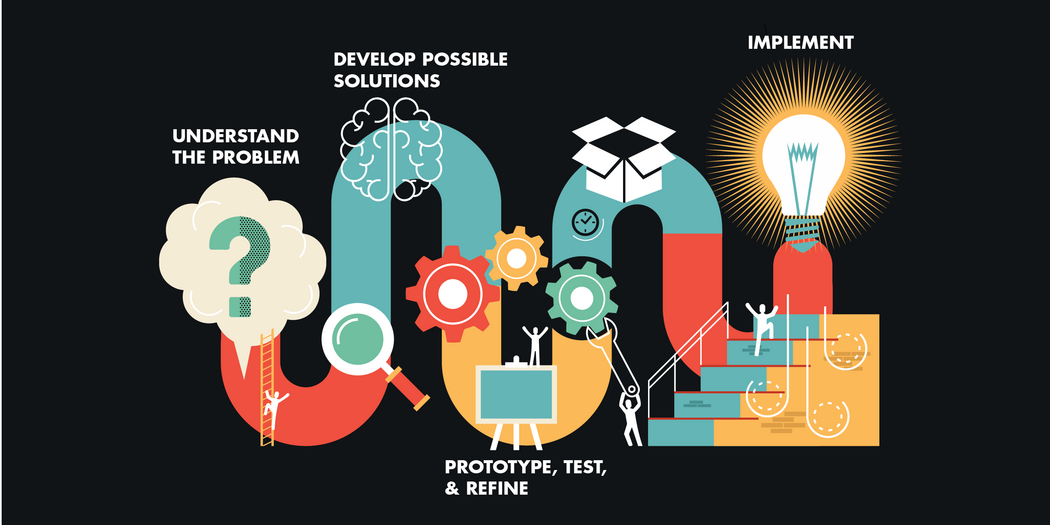
Understand the problem
The first step in design thinking is to understand the problem you are trying to solve before searching for solutions. Sometimes, the problem you need to address is not the one you originally set out to tackle.
“Most people don’t make much of an effort to explore the problem space before exploring the solution space,” said MIT Sloan professor Steve Eppinger. The mistake they make is to try and empathize, connecting the stated problem only to their own experiences. This falsely leads to the belief that you completely understand the situation. But the actual problem is always broader, more nuanced, or different than people originally assume.
Take the example of a meal delivery service in Holstebro, Denmark. When a team first began looking at the problem of poor nutrition and malnourishment among the elderly in the city, many of whom received meals from the service, it thought that simply updating the menu options would be a sufficient solution. But after closer observation, the team realized the scope of the problem was much larger , and that they would need to redesign the entire experience, not only for those receiving the meals, but for those preparing the meals as well. While the company changed almost everything about itself, including rebranding as The Good Kitchen, the most important change the company made when rethinking its business model was shifting how employees viewed themselves and their work. That, in turn, helped them create better meals (which were also drastically changed), yielding happier, better nourished customers.
Involve users
Imagine you are designing a new walker for rehabilitation patients and the elderly, but you have never used one. Could you fully understand what customers need? Certainly not, if you haven’t extensively observed and spoken with real customers. There is a reason that design thinking is often referred to as human-centered design.
“You have to immerse yourself in the problem,” Eppinger said.
How do you start to understand how to build a better walker? When a team from MIT’s Integrated Design and Management program together with the design firm Altitude took on that task, they met with walker users to interview them, observe them, and understand their experiences.
“We center the design process on human beings by understanding their needs at the beginning, and then include them throughout the development and testing process,” Eppinger said.
Central to the design thinking process is prototyping and testing (more on that later) which allows designers to try, to fail, and to learn what works. Testing also involves customers, and that continued involvement provides essential user feedback on potential designs and use cases. If the MIT-Altitude team studying walkers had ended user involvement after its initial interviews, it would likely have ended up with a walker that didn’t work very well for customers.
It is also important to interview and understand other stakeholders, like people selling the product, or those who are supporting the users throughout the product life cycle.
The second phase of design thinking is developing solutions to the problem (which you now fully understand). This begins with what most people know as brainstorming.
Hold nothing back during brainstorming sessions — except criticism. Infeasible ideas can generate useful solutions, but you’d never get there if you shoot down every impractical idea from the start.
“One of the key principles of brainstorming is to suspend judgment,” Eppinger said. “When we're exploring the solution space, we first broaden the search and generate lots of possibilities, including the wild and crazy ideas. Of course, the only way we're going to build on the wild and crazy ideas is if we consider them in the first place.”
That doesn’t mean you never judge the ideas, Eppinger said. That part comes later, in downselection. “But if we want 100 ideas to choose from, we can’t be very critical.”
In the case of The Good Kitchen, the kitchen employees were given new uniforms. Why? Uniforms don’t directly affect the competence of the cooks or the taste of the food.
But during interviews conducted with kitchen employees, designers realized that morale was low, in part because employees were bored preparing the same dishes over and over again, in part because they felt that others had a poor perception of them. The new, chef-style uniforms gave the cooks a greater sense of pride. It was only part of the solution, but if the idea had been rejected outright, or perhaps not even suggested, the company would have missed an important aspect of the solution.
Prototype and test. Repeat.
You’ve defined the problem. You’ve spoken to customers. You’ve brainstormed, come up with all sorts of ideas, and worked with your team to boil those ideas down to the ones you think may actually solve the problem you’ve defined.
“We don’t develop a good solution just by thinking about a list of ideas, bullet points and rough sketches,” Eppinger said. “We explore potential solutions through modeling and prototyping. We design, we build, we test, and repeat — this design iteration process is absolutely critical to effective design thinking.”
Repeating this loop of prototyping, testing, and gathering user feedback is crucial for making sure the design is right — that is, it works for customers, you can build it, and you can support it.
“After several iterations, we might get something that works, we validate it with real customers, and we often find that what we thought was a great solution is actually only just OK. But then we can make it a lot better through even just a few more iterations,” Eppinger said.
Implementation
The goal of all the steps that come before this is to have the best possible solution before you move into implementing the design. Your team will spend most of its time, its money, and its energy on this stage.
“Implementation involves detailed design, training, tooling, and ramping up. It is a huge amount of effort, so get it right before you expend that effort,” said Eppinger.
Design thinking isn’t just for “things.” If you are only applying the approach to physical products, you aren’t getting the most out of it. Design thinking can be applied to any problem that needs a creative solution. When Eppinger ran into a primary school educator who told him design thinking was big in his school, Eppinger thought he meant that they were teaching students the tenets of design thinking.
“It turns out they meant they were using design thinking in running their operations and improving the school programs. It’s being applied everywhere these days,” Eppinger said.
In another example from the education field, Peruvian entrepreneur Carlos Rodriguez-Pastor hired design consulting firm IDEO to redesign every aspect of the learning experience in a network of schools in Peru. The ultimate goal? To elevate Peru’s middle class.
As you’d expect, many large corporations have also adopted design thinking. IBM has adopted it at a company-wide level, training many of its nearly 400,000 employees in design thinking principles .
What can design thinking do for your business?
The impact of all the buzz around design thinking today is that people are realizing that “anybody who has a challenge that needs creative problem solving could benefit from this approach,” Eppinger said. That means that managers can use it, not only to design a new product or service, “but anytime they’ve got a challenge, a problem to solve.”
Applying design thinking techniques to business problems can help executives across industries rethink their product offerings, grow their markets, offer greater value to customers, or innovate and stay relevant. “I don’t know industries that can’t use design thinking,” said Eppinger.
Ready to go deeper?
Read “ The Designful Company ” by Marty Neumeier, a book that focuses on how businesses can benefit from design thinking, and “ Product Design and Development ,” co-authored by Eppinger, to better understand the detailed methods.
Register for an MIT Sloan Executive Education course:
Systematic Innovation of Products, Processes, and Services , a five-day course taught by Eppinger and other MIT professors.
- Leadership by Design: Innovation Process and Culture , a two-day course taught by MIT Integrated Design and Management director Matthew Kressy.
- Managing Complex Technical Projects , a two-day course taught by Eppinger.
- Apply for M astering Design Thinking , a 3-month online certificate course taught by Eppinger and MIT Sloan senior lecturers Renée Richardson Gosline and David Robertson.
Steve Eppinger is a professor of management science and innovation at MIT Sloan. He holds the General Motors Leaders for Global Operations Chair and has a PhD from MIT in engineering. He is the faculty co-director of MIT's System Design and Management program and Integrated Design and Management program, both master’s degrees joint between the MIT Sloan and Engineering schools. His research focuses on product development and technical project management, and has been applied to improving complex engineering processes in many industries.
Read next: 10 agile ideas worth sharing
Related Articles
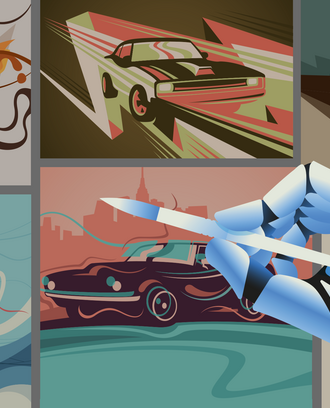
Skip navigation

World Leaders in Research-Based User Experience
Design Thinking 101

July 31, 2016 2016-07-31
- Email article
- Share on LinkedIn
- Share on Twitter
In This Article:
Definition of design thinking, why — the advantage, flexibility — adapt to fit your needs, scalability — think bigger, history of design thinking.
Design thinking is an ideology supported by an accompanying process . A complete definition requires an understanding of both.
Definition: The design thinking ideology asserts that a hands-on, user-centric approach to problem solving can lead to innovation, and innovation can lead to differentiation and a competitive advantage. This hands-on, user-centric approach is defined by the design thinking process and comprises 6 distinct phases, as defined and illustrated below.
The design-thinking framework follows an overall flow of 1) understand, 2) explore, and 3) materialize. Within these larger buckets fall the 6 phases: empathize, define, ideate, prototype, test, and implement.
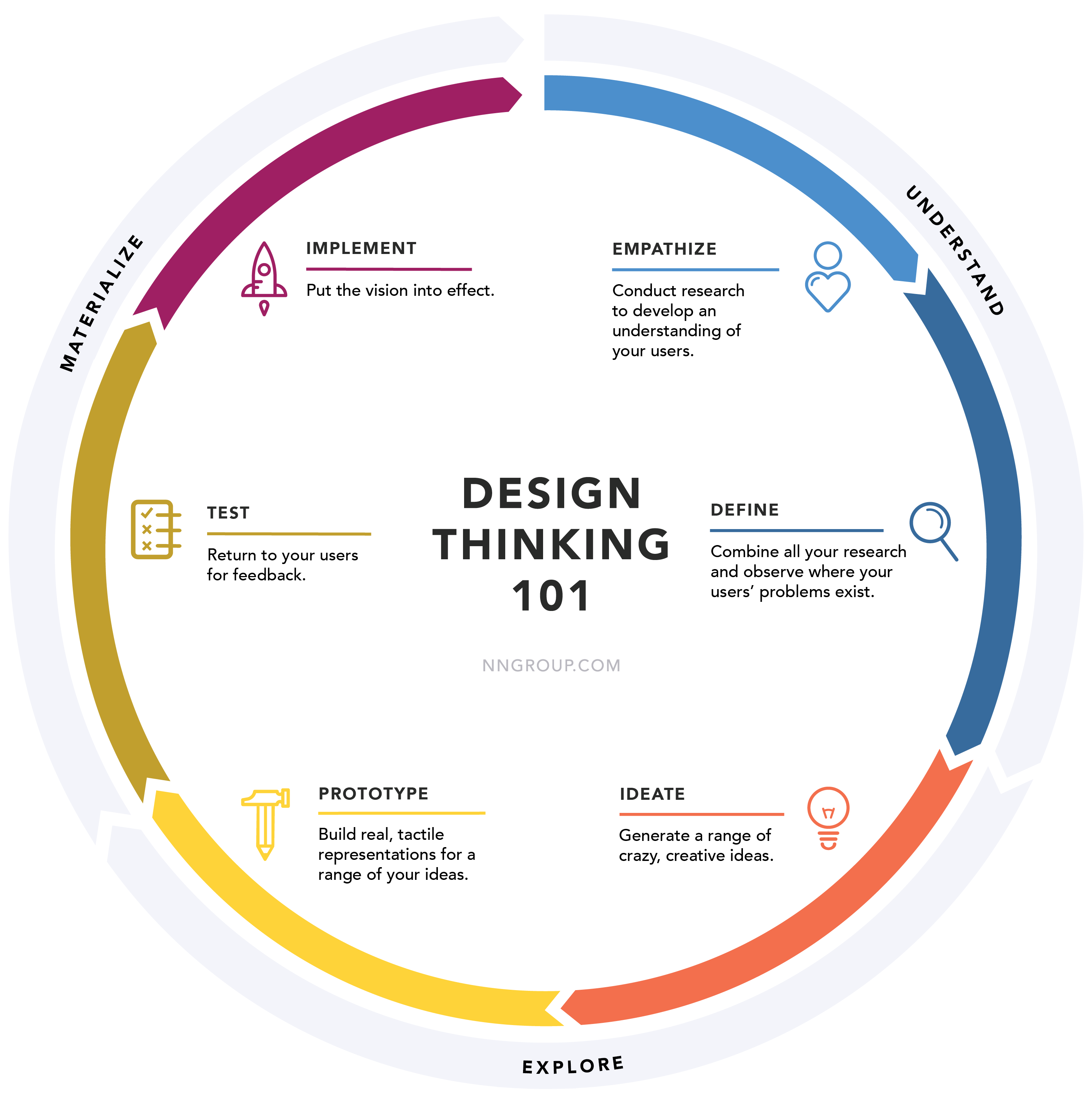
Conduct research in order to develop knowledge about what your users do, say, think, and feel .
Imagine your goal is to improve an onboarding experience for new users. In this phase, you talk to a range of actual users. Directly observe what they do, how they think, and what they want, asking yourself things like ‘what motivates or discourages users?’ or ‘where do they experience frustration?’ The goal is to gather enough observations that you can truly begin to empathize with your users and their perspectives.
Combine all your research and observe where your users’ problems exist. While pinpointing your users’ needs , begin to highlight opportunities for innovation.
Consider the onboarding example again. In the define phase, use the data gathered in the empathize phase to glean insights. Organize all your observations and draw parallels across your users’ current experiences. Is there a common pain point across many different users? Identify unmet user needs.
Brainstorm a range of crazy, creative ideas that address the unmet user needs identified in the define phase. Give yourself and your team total freedom; no idea is too farfetched and quantity supersedes quality.
At this phase, bring your team members together and sketch out many different ideas. Then, have them share ideas with one another, mixing and remixing, building on others' ideas.
Build real, tactile representations for a subset of your ideas. The goal of this phase is to understand what components of your ideas work, and which do not. In this phase you begin to weigh the impact vs. feasibility of your ideas through feedback on your prototypes.
Make your ideas tactile. If it is a new landing page, draw out a wireframe and get feedback internally. Change it based on feedback, then prototype it again in quick and dirty code. Then, share it with another group of people.
Return to your users for feedback. Ask yourself ‘Does this solution meet users’ needs?’ and ‘Has it improved how they feel, think, or do their tasks?’
Put your prototype in front of real customers and verify that it achieves your goals. Has the users’ perspective during onboarding improved? Does the new landing page increase time or money spent on your site? As you are executing your vision, continue to test along the way.
Put the vision into effect. Ensure that your solution is materialized and touches the lives of your end users.
This is the most important part of design thinking, but it is the one most often forgotten. As Don Norman preaches, “we need more design doing.” Design thinking does not free you from the actual design doing. It’s not magic.
“There’s no such thing as a creative type. As if creativity is a verb, a very time-consuming verb. It’s about taking an idea in your head, and transforming that idea into something real. And that’s always going to be a long and difficult process. If you’re doing it right, it’s going to feel like work.” - Milton Glaser
As impactful as design thinking can be for an organization, it only leads to true innovation if the vision is executed. The success of design thinking lies in its ability to transform an aspect of the end user’s life. This sixth step — implement — is crucial.
Why should we introduce a new way to think about product development? There are numerous reasons to engage in design thinking, enough to merit a standalone article, but in summary, design thinking achieves all these advantages at the same time.
Design thinking:
- Is a user-centered process that starts with user data, creates design artifacts that address real and not imaginary user needs, and then tests those artifacts with real users
- Leverages collective expertise and establishes a shared language, as well as buy-in amongst your team
- Encourages innovation by exploring multiple avenues for the same problem
Jakob Nielsen says “ a wonderful interface solving the wrong problem will fail ." Design thinking unfetters creative energies and focuses them on the right problem.
The above process will feel abstruse at first. Don’t think of it as if it were a prescribed step-by-step recipe for success. Instead, use it as scaffolding to support you when and where you need it. Be a master chef, not a line cook: take the recipe as a framework, then tweak as needed.
Each phase is meant to be iterative and cyclical as opposed to a strictly linear process, as depicted below. It is common to return to the two understanding phases, empathize and define, after an initial prototype is built and tested. This is because it is not until wireframes are prototyped and your ideas come to life that you are able to get a true representation of your design. For the first time, you can accurately assess if your solution really works. At this point, looping back to your user research is immensely helpful. What else do you need to know about the user in order to make decisions or to prioritize development order? What new use cases have arisen from the prototype that you didn’t previously research?
You can also repeat phases. It’s often necessary to do an exercise within a phase multiple times in order to arrive at the outcome needed to move forward. For example, in the define phase, different team members will have different backgrounds and expertise, and thus different approaches to problem identification. It’s common to spend an extended amount of time in the define phase, aligning a team to the same focus. Repetition is necessary if there are obstacles in establishing buy-in. The outcome of each phase should be sound enough to serve as a guiding principle throughout the rest of the process and to ensure that you never stray too far from your focus.
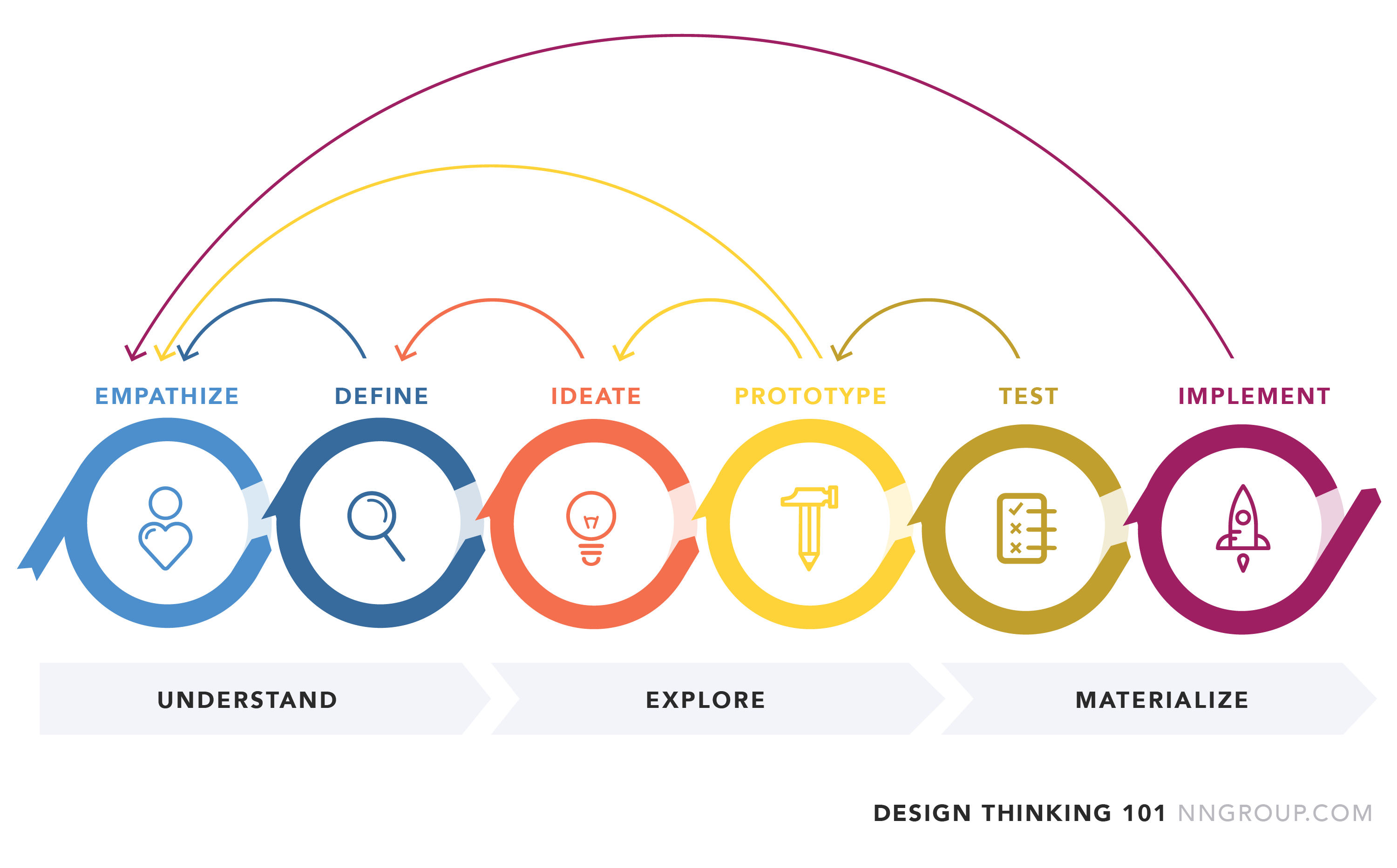
The packaged and accessible nature of design thinking makes it scalable. Organizations previously unable to shift their way of thinking now have a guide that can be comprehended regardless of expertise, mitigating the range of design talent while increasing the probability of success. This doesn’t just apply to traditional “designery” topics such as product design, but to a variety of societal, environmental, and economical issues. Design thinking is simple enough to be practiced at a range of scopes; even tough, undefined problems that might otherwise be overwhelming. While it can be applied over time to improve small functions like search, it can also be applied to design disruptive and transformative solutions, such as restructuring the career ladder for teachers in order to retain more talent.
It is a common misconception that design thinking is new. Design has been practiced for ages : monuments, bridges, automobiles, subway systems are all end-products of design processes. Throughout history, good designers have applied a human-centric creative process to build meaningful and effective solutions.
In the early 1900's husband and wife designers Charles and Ray Eames practiced “learning by doing,” exploring a range of needs and constraints before designing their Eames chairs, which continue to be in production even now, seventy years later. 1960's dressmaker Jean Muir was well known for her “common sense” approach to clothing design, placing as much emphasis on how her clothes felt to wear as they looked to others. These designers were innovators of their time. Their approaches can be viewed as early examples of design thinking — as they each developed a deep understanding of their users’ lives and unmet needs. Milton Glaser, the designer behind the famous I ♥ NY logo, describes this notion well: “We’re always looking, but we never really see…it’s the act of attention that allows you to really grasp something, to become fully conscious of it.”
Despite these (and other) early examples of human-centric products, design has historically been an afterthought in the business world, applied only to touch up a product’s aesthetics. This topical design application has resulted in corporations creating solutions which fail to meet their customers’ real needs. Consequently, some of these companies moved their designers from the end of the product-development process, where their contribution is limited, to the beginning. Their human-centric design approach proved to be a differentiator: those companies that used it have reaped the financial benefits of creating products shaped by human needs.
In order for this approach to be adopted across large organizations, it needed to be standardized. Cue design thinking, a formalized framework of applying the creative design process to traditional business problems.
The specific term "design thinking" was coined in the 1990's by David Kelley and Tim Brown of IDEO, with Roger Martin, and encapsulated methods and ideas that have been brewing for years into a single unified concept.
We live in an era of experiences , be they services or products, and we’ve come to have high expectations for these experiences. They are becoming more complex in nature as information and technology continues to evolve. With each evolution comes a new set of unmet needs. While design thinking is simply an approach to problem solving, it increases the probability of success and breakthrough innovation.
Learn more about design thinking in the full-day course Generating Big Ideas with Design Thinking .
Free Downloads
Related courses, generating big ideas with design thinking.
Unearthing user pain points to drive breakthrough design concepts
Interaction
Service Blueprinting
Orchestrate people, props, and processes that are core to your digital experience
Discovery: Building the Right Thing
Conduct successful discovery phases to ensure you build the best solution
Related Topics
- Design Process Design Process
- Managing UX Teams
Learn More:
Please accept marketing cookies to view the embedded video. https://www.youtube.com/watch?v=6lmvCqvmjfE

The Role of Design
Don Norman · 5 min

Design Thinking Activities
Sarah Gibbons · 5 min

Design Thinking: Top 3 Challenges and Solutions
Related Articles:
Design Thinking: Study Guide
Kate Moran and Megan Brown · 4 min
Service Blueprinting in Practice: Who, When, What
Alita Joyce and Sarah Gibbons · 7 min
Design Thinking Builds Strong Teams
User-Centered Intranet Redesign: Set Up for Success in 11 Steps
Kara Pernice · 10 min
UX Responsibilities in Scrum Events
Anna Kaley · 13 min
Journey Mapping: 9 Frequently Asked Questions
Alita Joyce and Kate Kaplan · 7 min
- Josh Singer
- Jun 24, 2021
The Rise Of Design Thinking As A Problem Solving Strategy
- 18 min read
- UX , Design , Product Strategy
- Share on Twitter , LinkedIn
About The Author
Josh Singer is a UX Designer and former Math Editor at Renaissance Learning , where he has worked on products and written content for educators and students … More about Josh ↬
Email Newsletter
Weekly tips on front-end & UX . Trusted by 200,000+ folks.
Having spent the last 20 years in the world of educational technology working on products for educators and students, I have learned to understand teachers and administrators as designers themselves, who use a wide set of tools and techniques to craft learning experiences for students. I have come to believe that by extending this model and framing all users as designers, we are able to mine our own experiences to gain a deeper empathy for their struggles. In doing so, we can develop strategies to set our user-designers up to successfully deal with change and uncertainty.
If you are a designer, or if you have worked with designers any time in the last decade, you are probably familiar with the term “design thinking.” Typically, design thinking is represented by a series of steps that looks something like this:
There are many variations of this diagram, reflective of the multitude of ways that the process can be implemented. It is typically a months-long undertaking that begins with empathy: we get to know a group of people by immersing ourselves in a specific context to understand their tasks, pain points, and motivations. From there, we take stock of our observations, looking for patterns, themes, and opportunities, solidifying the definition of the problem we wish to solve. Then, we iteratively ideate, prototype, and test solutions until we arrive at one we like (or until we run out of time).
Ultimately, the whole process boils down to a simple purpose: to solve a problem. This is not a new purpose, of course, and not unique to those of us with “Designer” in our job titles. In fact, while design thinking is not exactly the same as the scientific method we learned in school, it bears an uncanny resemblance:
By placing design thinking within this lineage, we equate the designer with the scientist, the one responsible for facilitating the discovery and delivery of the solution.
At its best, design thinking is highly collaborative. It brings together people from across the organization and often from outside of it, so that a diverse group, including those whose voices are not usually heard, can participate. It centers the needs and emotions of those we hope to serve. Hopefully, it pulls us out of our own experiences and biases, opening us up to new ways of thinking and shining a light on new perspectives. At its worst, when design thinking is dogmatically followed or cynically applied, it becomes a means of gatekeeping, imposing a rigid structure and set of rules that leave little room for approaches to design that do not conform to an exclusionary set of cultural standards.
Its relative merits, faults, and occasional high-profile critiques notwithstanding, design thinking has become orthodoxy in the world of software development, where not using it feels tantamount to malpractice. No UX Designer’s portfolio is complete without a well-lit photo capturing a group of eager problem solvers in the midst of the “Define” step, huddled together, gazing thoughtfully at a wall covered in colorful sticky notes . My colleagues and I use it frequently, sticky notes and all, as we work on products in EdTech.
Like “lean,” the design thinking methodology has quickly spread beyond the software industry into the wider world. Today you can find it in elementary schools , in nonprofits , and at the center of innovation labs housed in local governments .
Amidst all of the hoopla, it is easy to overlook a central assumption of design thinking, which seems almost too obvious to mention: the existence of a solution . The process rests on the premise that, once the steps have been carried out, the state of the problem changes from ‘unsolved’ to ‘solved.’ While this problem-solution framework is undeniably effective, it is also incomplete. If we zoom out , we can see the limits of our power as designers, and then we can consider what those limits mean for how we approach our work.

Chaos And The Limits Of Problem Solving
An unchecked belief in our ability to methodically solve big problems can lead to some pretty grandiose ideas. In his book, Chaos: Making a New Science , James Gleick describes a period in the 1950s and ’60s when, as computing and satellite technologies continued to advance, a large, international group of scientists embarked on a project that, in hindsight, sounds absurd. Their goal was not only to accurately predict, but also to control the weather:
“There was an idea that human society would free itself from weather’s turmoil and become its master instead of its victim. Geodesic domes would cover cornfields. Airplanes would seed the clouds. Scientists would learn how to make rain and how to stop it.” — “Chaos: Making a New Science,” James Gleick
It is easy to scoff at their hubris now, but at the time it was a natural result of an ever-heightening faith that, with science, no problem is too big to solve. What those scientists did not account for is a phenomenon commonly known as the butterfly effect, which is now a central pillar of the field of chaos theory. The butterfly effect describes the inherent volatility that arises in complex and interconnected systems. It gets its name from a famous illustration of the principle: a butterfly flapping its wings and creating tiny disturbances in the air around it on one side of the globe today can cause a hurricane tomorrow on the other. Studies have shown that the butterfly effect impacts everything in society from politics and the economy to trends in fashion .
Our Chaotic Systems
If we accept that, like the climate, the social systems in which we design and build solutions are complex and unpredictable, a tension becomes apparent. Design thinking exists in a context that is chaotic and unpredictable by nature, and yet the act of predicting is central. By prototyping and testing , we are essentially gathering evidence about what the outcome of our design will be, and whether it will effectively solve the problem we have defined. The process ends when we feel confident in our prediction and happy with the result.
I want to take pains to point out again that this approach is not wrong! We should trust the process to confirm that our designs are useful and usable in the immediate sense. At the same time, whenever we deliver a solution, we are like the butterfly flapping its wings, contributing (along with countless others) to a constant stream of change. So while the short-term result is often predictable, the longer-term outlook for the system as a whole, and for how long our solution will hold as the system changes, is unknowable.
Impermanence
As we use design thinking to solve problems, how do we deal with the fact that our solutions are built to address conditions that will change in ways we can’t plan for?
One basic thing we can do is to maintain awareness of the impermanence of our work, recognizing that it was built to meet the needs of a specific moment in time . It is more akin to a tree fort constructed in the woods than to a castle fortress made from stone. While the castle may take years to build and last for centuries, impervious to the weather while protecting its inhabitants from all of the chaos that exists outside its walls, the tree fort, even if well-designed and constructed, is directly connected to and at the mercy of its environment. While a tree fort may shelter us from the rain, we do not build it with the expectation that it will last forever, only with the hope that it will serve us well while it’s here. Hopefully, through the experience of building it, we continue to learn and improve.
The fact that our work is impermanent does not diminish its importance, nor does it give us the license to be sloppy. It means that the ability to quickly and consistently adapt and evolve without sacrificing functional or aesthetic quality is core to the job, which is one reason why design systems , which provide consistent and high-quality reusable patterns and components, are crucial.
Designing For User-Designers
A more fundamental way to deal with the impermanence of our work is to rethink our self-image as designers. If we identify only as problem solvers, then our work becomes obsolete quickly and suddenly as conditions change, while in the meantime our users must wait helplessly to be rescued with the next solution. In reality, our users are compelled to adapt and design their own solutions, using whatever tools they have at their disposal. In effect, they are their own designers, and so our task shifts from delivering full, fixed solutions to providing our user-designers with useful and usable tools specific to their needs .
In thinking from this perspective, we can gain empathy for our users by understanding our place as equals on a continuum, each of us relying on others, just as others rely on us.
Key Principles To Center The Needs Of User-Designers
Below are some things to consider when designing for user-designers. In the spirit of the user-designer continuum and of finding the universal in the specific, in the examples below I draw on my experience from both sides of the relationship. First, from my work as a designer in the EdTech space, in which educators rely on people like me to produce tools that enable them to design learning experiences for students. Second, as a user of the products, I rely on them in my daily UX work.
1. Don’t Lock In The Value
It is crucial to have a clear understanding of why someone would use your product in the first place, and then make sure not to get in the way. While there is a temptation to keep that value contained so that users must remain in your product to reap all of the benefits, we should resist that mindset.
Remember that your product is likely just one tool in a larger set, and our users rely on their tools to be compatible with each other as they design their own coherent, holistic solutions. Whereas the designer-as-problem-solver is inclined to build a self-contained solution, jealously locking value within their product, the designer-for-designers facilitates the free flow of information and continuity of task completion between tools however our user-designers choose to use them. By sharing the value, not only do we elevate its source, we give our users full use of their toolbox.
An Example As A Designer Of EdTech Products:
In student assessment applications, like in many other types of applications, the core value is the data. In other words, the fundamental reason schools administer assessments is to learn about student achievement and growth. Once that data is captured, there are all sorts of ways we can then use it to make intelligent, research-based recommendations around tasks like setting student goals, creating instructional groups, and assigning practice. To be clear, we do try very hard to support all of it in our products, often by using design thinking. Ultimately, though, it all starts with the data.
In practice, teachers often have a number of options to choose from when completing their tasks, and they have their own valid reasons for their preferences. Anything from state requirements to school policy to personal working style may dictate their approach to, say, student goal setting. If — out of a desire to keep people in our product — we make it extra difficult for teachers to use data from our assessments to set goals outside of our product (say, in a spreadsheet), then instead of increasing our value, we have added inconvenience and frustration. The lesson, in this case, is not to lock up the data! Ironically, by hoarding it, we make it less valuable. By providing educators with easy and flexible ways to get it out, we unlock its power.
An Example As A User Of Design Tools:
I tend to switch between tools as I go through the design thinking process based on the core value each tool provides. All of these tools are equally essential to the process, and I count on them to work together as I move between phases so that I don’t have to build from scratch at every step. For example, the core value I get from Sketch is mostly in the “Ideation” phase, in that it allows me to brainstorm quickly and freely so that I can try out multiple ideas in a short amount of time. By making it easy for me to bring ideas from that product into a more heavy-duty prototyping application like Axure , instead of locking them inside, Sketch saves me time and frustration and increases my attachment to it. If, for competitive reasons, those tools ceased to cooperate, I would be much more likely to drop one or both.
2. Use Established Patterns
It is always important to remember Jakob’s Law , which states simply that users spend more time on other sites than they spend on yours. If they are accustomed to engaging with information or accomplishing a task a certain way and you ask them to do it differently, they will not view it as an exciting opportunity to learn something new. They will be resentful. Scaling the learning curve is usually painful and frustrating. While it is possible to improve or even replace established patterns, it’s a very tall order . In a world full of unpredictability, consistent and predictable patterns among tools create harmony between experiences.
By following conventions around data visualization in a given domain, we make it easy for users to switch and compare between sources. In the context of education, it is common to display student progress in a graph of test scores over time, with the score scale represented on the vertical axis and the timeline along the horizontal axis. In other words, a scatter plot or line graph, often with one or two more dimensions represented, maybe by color or dot size. Through repeated, consistent exposure, even the most data-phobic teachers can easily and immediately interpret this data visualization and craft a narrative around it.
You could hold a sketching activity during the “Ideate” phase of design thinking in which you brainstorm dozens of other ways to present the same information. Some of those ideas would undoubtedly be interesting and cool, and might even surface new and useful insights. This would be a worthwhile activity! In all likelihood, though, the best decision would not be to replace the accepted pattern. While it can be useful to explore other approaches, ultimately the most benefit is usually derived from using patterns that people already understand and are used to across a variety of products and contexts.
In my role, I often need to quickly learn new UX software, either to facilitate collaboration with designers from outside of my organization or when my team decides to adopt something new. When that happens, I rely heavily on established patterns of visual language to quickly get from the learning phase to the productive phase. Where there is consistency, there is relief and understanding. Where there is a divergence for no clear reason, there is frustration. If a product team decided to rethink the standard alignment palette, for example, in the name of innovation, it would almost certainly make the product more difficult to adopt while failing to provide any benefit.
3. Build For Flexibility
As an expert in your given domain, you might have strong, research-based positions on how certain tasks should be done, and a healthy desire to build those best practices into your product. If you have built up trust with your users, then adding guidance and guardrails directly into the workflow can be powerful. Remember, though, that it is only guidance. The user-designer knows when those best practices apply and when they should be ignored. While we should generally avoid overwhelming our users with choices , we should strive for flexibility whenever possible.
An Example As A Designer Of EdTech Products
Many EdTech products provide mechanisms for setting student learning goals. Generally, teachers appreciate being given recommendations and smart defaults when completing this task, knowing that there is a rich body of research that can help determine a reasonable range of expectations for a given student based on their historical performance and the larger data set from their peers. Providing that guidance in a simple, understandable format is generally beneficial and appreciated. But, we as designers are removed from the individual students and circumstances, as well as the ever-changing needs and requirements driving educators’ goal-setting decisions. We can build recommendations into the happy path and make enacting them as painless as possible, but the user needs an easy way to edit our guidance or to reject it altogether.
The ability to create a library of reusable objects in most UX applications has made them orders of magnitude more efficient. Knowing that I can pull in a pre-made, properly-branded UI element as needed, rather than creating one from scratch, is a major benefit. Often, in the “Ideate” phase of design thinking, I can use these pre-made components in their fully generic form simply to communicate the main idea and hierarchy of a layout. But, when it’s time to fill in the details for high-fidelity prototyping and testing, the ability to override the default text and styling, or even detach the object from its library and make more drastic changes, may become necessary. Having the flexibility to start quickly and then progressively customize lets me adapt rapidly as conditions change, and helps make moving between the design thinking steps quick and easy.
4. Help Your User-Designers Build Empathy For Their Users
When thinking about our users as designers, one key question is: who are they designing for? In many cases, they are designing solutions for themselves, and so their designer-selves naturally empathize with and understand the problems of their user-selves. In other cases, though, they are designing for another group of people altogether. In those situations, we can look for ways to help them think like designers and develop empathy for their users.
For educators, the users are the students. One way to help them center the needs of their audience when they design experiences is to follow the standards of Universal Design for Learning , equipping educators to provide instructional material with multiple means of engagement (i.e., use a variety of strategies to drive motivation for learning), multiple means of representation (i.e., accommodate students’ different learning styles and backgrounds), and multiple means of action and expression (i.e., support different ways for students to interact with instructional material and demonstrate learning). These guidelines open up approaches to learning and nudge users to remember that all of the ways their audience engages with practice and instruction must be supported.
Anything a tool can do to encourage design decisions that center accessibility is hugely helpful, in that it reminds us to consider those who face the most barriers to using our products. While some commonly-used UX tools do include functionality for creating alt-text for images, setting a tab order for keyboard navigation, and enabling responsive layouts for devices of various sizes, there is an opportunity for these tools to do much more. I would love to see built-in accessibility checks that would help us identify potential issues as early in the process as possible.
Hopefully, by applying the core principles of unlocking value, leveraging established patterns, understanding the individual’s need for flexibility , and facilitating empathy in our product design, we can help set our users up to adapt to unforeseen changes. By treating our users as designers in their own right, not only do we recognize and account for the complexity and unpredictability of their environment, we also start to see them as equals.
While those of us with the word “Designer” in our official job title do have a specific and necessary role, we are not gods, handing down solutions from on high, but fellow strugglers trying to navigate a complex, dynamic, stormy world. Nobody can control the weather , but we can make great galoshes, raincoats, and umbrellas.
Further Reading
- If you’re interested in diving into the fascinating world of chaos theory, James Gleick’s book Chaos: Making a New Science , which I quoted in this article, is a wonderful place to start.
- Jon Kolko wrote a great piece in 2015 on the emergence of design thinking in business, in which he describes its main principles and benefits. In a subsequent article from 2017, he considers the growing backlash as organizations have stumbled and taken shortcuts when attempting to put theory into practice, and what the lasting impact may be. An important takeaway here is that, in treating everyone as a designer, we run the risk of downplaying the importance of the professional Designer’s specific skill set. We should recognize that, while it is useful to think of teachers (or any of our users) as designers, the day-to-day tools, methods, and goals are entirely different.
- In the article Making Sense in the Data Economy , Hugh Dubberly and Paul Pangaro describe the emerging challenges and complexities of the designer’s role in moving from the manufacture of physical products to the big data frontier. With this change, the focus shifts from designing finished products (solutions) to maintaining complex and dynamic platforms, and the concept of “meta-design” — designing the systems in which others operate — emerges.
- To keep exploring the ever-evolving strategies of designing for designers, search Smashing Magazine and your other favorite UX resources for ideas on interoperability, consistency, flexibility, and accessibility!
Smashing Newsletter
Tips on front-end & UX, delivered weekly in your inbox. Just the things you can actually use.
Front-End & UX Workshops, Online
With practical takeaways, live sessions, video recordings and a friendly Q&A.
TypeScript in 50 Lessons
Everything TypeScript, with code walkthroughs and examples. And other printed books.
How to master the seven-step problem-solving process
In this episode of the McKinsey Podcast , Simon London speaks with Charles Conn, CEO of venture-capital firm Oxford Sciences Innovation, and McKinsey senior partner Hugo Sarrazin about the complexities of different problem-solving strategies.
Podcast transcript
Simon London: Hello, and welcome to this episode of the McKinsey Podcast , with me, Simon London. What’s the number-one skill you need to succeed professionally? Salesmanship, perhaps? Or a facility with statistics? Or maybe the ability to communicate crisply and clearly? Many would argue that at the very top of the list comes problem solving: that is, the ability to think through and come up with an optimal course of action to address any complex challenge—in business, in public policy, or indeed in life.
Looked at this way, it’s no surprise that McKinsey takes problem solving very seriously, testing for it during the recruiting process and then honing it, in McKinsey consultants, through immersion in a structured seven-step method. To discuss the art of problem solving, I sat down in California with McKinsey senior partner Hugo Sarrazin and also with Charles Conn. Charles is a former McKinsey partner, entrepreneur, executive, and coauthor of the book Bulletproof Problem Solving: The One Skill That Changes Everything [John Wiley & Sons, 2018].
Charles and Hugo, welcome to the podcast. Thank you for being here.
Hugo Sarrazin: Our pleasure.
Charles Conn: It’s terrific to be here.
Simon London: Problem solving is a really interesting piece of terminology. It could mean so many different things. I have a son who’s a teenage climber. They talk about solving problems. Climbing is problem solving. Charles, when you talk about problem solving, what are you talking about?
Charles Conn: For me, problem solving is the answer to the question “What should I do?” It’s interesting when there’s uncertainty and complexity, and when it’s meaningful because there are consequences. Your son’s climbing is a perfect example. There are consequences, and it’s complicated, and there’s uncertainty—can he make that grab? I think we can apply that same frame almost at any level. You can think about questions like “What town would I like to live in?” or “Should I put solar panels on my roof?”
You might think that’s a funny thing to apply problem solving to, but in my mind it’s not fundamentally different from business problem solving, which answers the question “What should my strategy be?” Or problem solving at the policy level: “How do we combat climate change?” “Should I support the local school bond?” I think these are all part and parcel of the same type of question, “What should I do?”
I’m a big fan of structured problem solving. By following steps, we can more clearly understand what problem it is we’re solving, what are the components of the problem that we’re solving, which components are the most important ones for us to pay attention to, which analytic techniques we should apply to those, and how we can synthesize what we’ve learned back into a compelling story. That’s all it is, at its heart.
I think sometimes when people think about seven steps, they assume that there’s a rigidity to this. That’s not it at all. It’s actually to give you the scope for creativity, which often doesn’t exist when your problem solving is muddled.
Simon London: You were just talking about the seven-step process. That’s what’s written down in the book, but it’s a very McKinsey process as well. Without getting too deep into the weeds, let’s go through the steps, one by one. You were just talking about problem definition as being a particularly important thing to get right first. That’s the first step. Hugo, tell us about that.
Hugo Sarrazin: It is surprising how often people jump past this step and make a bunch of assumptions. The most powerful thing is to step back and ask the basic questions—“What are we trying to solve? What are the constraints that exist? What are the dependencies?” Let’s make those explicit and really push the thinking and defining. At McKinsey, we spend an enormous amount of time in writing that little statement, and the statement, if you’re a logic purist, is great. You debate. “Is it an ‘or’? Is it an ‘and’? What’s the action verb?” Because all these specific words help you get to the heart of what matters.
Want to subscribe to The McKinsey Podcast ?
Simon London: So this is a concise problem statement.
Hugo Sarrazin: Yeah. It’s not like “Can we grow in Japan?” That’s interesting, but it is “What, specifically, are we trying to uncover in the growth of a product in Japan? Or a segment in Japan? Or a channel in Japan?” When you spend an enormous amount of time, in the first meeting of the different stakeholders, debating this and having different people put forward what they think the problem definition is, you realize that people have completely different views of why they’re here. That, to me, is the most important step.
Charles Conn: I would agree with that. For me, the problem context is critical. When we understand “What are the forces acting upon your decision maker? How quickly is the answer needed? With what precision is the answer needed? Are there areas that are off limits or areas where we would particularly like to find our solution? Is the decision maker open to exploring other areas?” then you not only become more efficient, and move toward what we call the critical path in problem solving, but you also make it so much more likely that you’re not going to waste your time or your decision maker’s time.
How often do especially bright young people run off with half of the idea about what the problem is and start collecting data and start building models—only to discover that they’ve really gone off half-cocked.
Hugo Sarrazin: Yeah.
Charles Conn: And in the wrong direction.
Simon London: OK. So step one—and there is a real art and a structure to it—is define the problem. Step two, Charles?
Charles Conn: My favorite step is step two, which is to use logic trees to disaggregate the problem. Every problem we’re solving has some complexity and some uncertainty in it. The only way that we can really get our team working on the problem is to take the problem apart into logical pieces.
What we find, of course, is that the way to disaggregate the problem often gives you an insight into the answer to the problem quite quickly. I love to do two or three different cuts at it, each one giving a bit of a different insight into what might be going wrong. By doing sensible disaggregations, using logic trees, we can figure out which parts of the problem we should be looking at, and we can assign those different parts to team members.
Simon London: What’s a good example of a logic tree on a sort of ratable problem?
Charles Conn: Maybe the easiest one is the classic profit tree. Almost in every business that I would take a look at, I would start with a profit or return-on-assets tree. In its simplest form, you have the components of revenue, which are price and quantity, and the components of cost, which are cost and quantity. Each of those can be broken out. Cost can be broken into variable cost and fixed cost. The components of price can be broken into what your pricing scheme is. That simple tree often provides insight into what’s going on in a business or what the difference is between that business and the competitors.
If we add the leg, which is “What’s the asset base or investment element?”—so profit divided by assets—then we can ask the question “Is the business using its investments sensibly?” whether that’s in stores or in manufacturing or in transportation assets. I hope we can see just how simple this is, even though we’re describing it in words.
When I went to work with Gordon Moore at the Moore Foundation, the problem that he asked us to look at was “How can we save Pacific salmon?” Now, that sounds like an impossible question, but it was amenable to precisely the same type of disaggregation and allowed us to organize what became a 15-year effort to improve the likelihood of good outcomes for Pacific salmon.
Simon London: Now, is there a danger that your logic tree can be impossibly large? This, I think, brings us onto the third step in the process, which is that you have to prioritize.
Charles Conn: Absolutely. The third step, which we also emphasize, along with good problem definition, is rigorous prioritization—we ask the questions “How important is this lever or this branch of the tree in the overall outcome that we seek to achieve? How much can I move that lever?” Obviously, we try and focus our efforts on ones that have a big impact on the problem and the ones that we have the ability to change. With salmon, ocean conditions turned out to be a big lever, but not one that we could adjust. We focused our attention on fish habitats and fish-harvesting practices, which were big levers that we could affect.
People spend a lot of time arguing about branches that are either not important or that none of us can change. We see it in the public square. When we deal with questions at the policy level—“Should you support the death penalty?” “How do we affect climate change?” “How can we uncover the causes and address homelessness?”—it’s even more important that we’re focusing on levers that are big and movable.
Would you like to learn more about our Strategy & Corporate Finance Practice ?
Simon London: Let’s move swiftly on to step four. You’ve defined your problem, you disaggregate it, you prioritize where you want to analyze—what you want to really look at hard. Then you got to the work plan. Now, what does that mean in practice?
Hugo Sarrazin: Depending on what you’ve prioritized, there are many things you could do. It could be breaking the work among the team members so that people have a clear piece of the work to do. It could be defining the specific analyses that need to get done and executed, and being clear on time lines. There’s always a level-one answer, there’s a level-two answer, there’s a level-three answer. Without being too flippant, I can solve any problem during a good dinner with wine. It won’t have a whole lot of backing.
Simon London: Not going to have a lot of depth to it.
Hugo Sarrazin: No, but it may be useful as a starting point. If the stakes are not that high, that could be OK. If it’s really high stakes, you may need level three and have the whole model validated in three different ways. You need to find a work plan that reflects the level of precision, the time frame you have, and the stakeholders you need to bring along in the exercise.
Charles Conn: I love the way you’ve described that, because, again, some people think of problem solving as a linear thing, but of course what’s critical is that it’s iterative. As you say, you can solve the problem in one day or even one hour.
Charles Conn: We encourage our teams everywhere to do that. We call it the one-day answer or the one-hour answer. In work planning, we’re always iterating. Every time you see a 50-page work plan that stretches out to three months, you know it’s wrong. It will be outmoded very quickly by that learning process that you described. Iterative problem solving is a critical part of this. Sometimes, people think work planning sounds dull, but it isn’t. It’s how we know what’s expected of us and when we need to deliver it and how we’re progressing toward the answer. It’s also the place where we can deal with biases. Bias is a feature of every human decision-making process. If we design our team interactions intelligently, we can avoid the worst sort of biases.
Simon London: Here we’re talking about cognitive biases primarily, right? It’s not that I’m biased against you because of your accent or something. These are the cognitive biases that behavioral sciences have shown we all carry around, things like anchoring, overoptimism—these kinds of things.
Both: Yeah.
Charles Conn: Availability bias is the one that I’m always alert to. You think you’ve seen the problem before, and therefore what’s available is your previous conception of it—and we have to be most careful about that. In any human setting, we also have to be careful about biases that are based on hierarchies, sometimes called sunflower bias. I’m sure, Hugo, with your teams, you make sure that the youngest team members speak first. Not the oldest team members, because it’s easy for people to look at who’s senior and alter their own creative approaches.
Hugo Sarrazin: It’s helpful, at that moment—if someone is asserting a point of view—to ask the question “This was true in what context?” You’re trying to apply something that worked in one context to a different one. That can be deadly if the context has changed, and that’s why organizations struggle to change. You promote all these people because they did something that worked well in the past, and then there’s a disruption in the industry, and they keep doing what got them promoted even though the context has changed.
Simon London: Right. Right.
Hugo Sarrazin: So it’s the same thing in problem solving.
Charles Conn: And it’s why diversity in our teams is so important. It’s one of the best things about the world that we’re in now. We’re likely to have people from different socioeconomic, ethnic, and national backgrounds, each of whom sees problems from a slightly different perspective. It is therefore much more likely that the team will uncover a truly creative and clever approach to problem solving.
Simon London: Let’s move on to step five. You’ve done your work plan. Now you’ve actually got to do the analysis. The thing that strikes me here is that the range of tools that we have at our disposal now, of course, is just huge, particularly with advances in computation, advanced analytics. There’s so many things that you can apply here. Just talk about the analysis stage. How do you pick the right tools?
Charles Conn: For me, the most important thing is that we start with simple heuristics and explanatory statistics before we go off and use the big-gun tools. We need to understand the shape and scope of our problem before we start applying these massive and complex analytical approaches.
Simon London: Would you agree with that?
Hugo Sarrazin: I agree. I think there are so many wonderful heuristics. You need to start there before you go deep into the modeling exercise. There’s an interesting dynamic that’s happening, though. In some cases, for some types of problems, it is even better to set yourself up to maximize your learning. Your problem-solving methodology is test and learn, test and learn, test and learn, and iterate. That is a heuristic in itself, the A/B testing that is used in many parts of the world. So that’s a problem-solving methodology. It’s nothing different. It just uses technology and feedback loops in a fast way. The other one is exploratory data analysis. When you’re dealing with a large-scale problem, and there’s so much data, I can get to the heuristics that Charles was talking about through very clever visualization of data.
You test with your data. You need to set up an environment to do so, but don’t get caught up in neural-network modeling immediately. You’re testing, you’re checking—“Is the data right? Is it sound? Does it make sense?”—before you launch too far.
Simon London: You do hear these ideas—that if you have a big enough data set and enough algorithms, they’re going to find things that you just wouldn’t have spotted, find solutions that maybe you wouldn’t have thought of. Does machine learning sort of revolutionize the problem-solving process? Or are these actually just other tools in the toolbox for structured problem solving?
Charles Conn: It can be revolutionary. There are some areas in which the pattern recognition of large data sets and good algorithms can help us see things that we otherwise couldn’t see. But I do think it’s terribly important we don’t think that this particular technique is a substitute for superb problem solving, starting with good problem definition. Many people use machine learning without understanding algorithms that themselves can have biases built into them. Just as 20 years ago, when we were doing statistical analysis, we knew that we needed good model definition, we still need a good understanding of our algorithms and really good problem definition before we launch off into big data sets and unknown algorithms.
Simon London: Step six. You’ve done your analysis.
Charles Conn: I take six and seven together, and this is the place where young problem solvers often make a mistake. They’ve got their analysis, and they assume that’s the answer, and of course it isn’t the answer. The ability to synthesize the pieces that came out of the analysis and begin to weave those into a story that helps people answer the question “What should I do?” This is back to where we started. If we can’t synthesize, and we can’t tell a story, then our decision maker can’t find the answer to “What should I do?”
Simon London: But, again, these final steps are about motivating people to action, right?
Charles Conn: Yeah.
Simon London: I am slightly torn about the nomenclature of problem solving because it’s on paper, right? Until you motivate people to action, you actually haven’t solved anything.
Charles Conn: I love this question because I think decision-making theory, without a bias to action, is a waste of time. Everything in how I approach this is to help people take action that makes the world better.
Simon London: Hence, these are absolutely critical steps. If you don’t do this well, you’ve just got a bunch of analysis.
Charles Conn: We end up in exactly the same place where we started, which is people speaking across each other, past each other in the public square, rather than actually working together, shoulder to shoulder, to crack these important problems.
Simon London: In the real world, we have a lot of uncertainty—arguably, increasing uncertainty. How do good problem solvers deal with that?
Hugo Sarrazin: At every step of the process. In the problem definition, when you’re defining the context, you need to understand those sources of uncertainty and whether they’re important or not important. It becomes important in the definition of the tree.
You need to think carefully about the branches of the tree that are more certain and less certain as you define them. They don’t have equal weight just because they’ve got equal space on the page. Then, when you’re prioritizing, your prioritization approach may put more emphasis on things that have low probability but huge impact—or, vice versa, may put a lot of priority on things that are very likely and, hopefully, have a reasonable impact. You can introduce that along the way. When you come back to the synthesis, you just need to be nuanced about what you’re understanding, the likelihood.
Often, people lack humility in the way they make their recommendations: “This is the answer.” They’re very precise, and I think we would all be well-served to say, “This is a likely answer under the following sets of conditions” and then make the level of uncertainty clearer, if that is appropriate. It doesn’t mean you’re always in the gray zone; it doesn’t mean you don’t have a point of view. It just means that you can be explicit about the certainty of your answer when you make that recommendation.
Simon London: So it sounds like there is an underlying principle: “Acknowledge and embrace the uncertainty. Don’t pretend that it isn’t there. Be very clear about what the uncertainties are up front, and then build that into every step of the process.”
Hugo Sarrazin: Every step of the process.
Simon London: Yeah. We have just walked through a particular structured methodology for problem solving. But, of course, this is not the only structured methodology for problem solving. One that is also very well-known is design thinking, which comes at things very differently. So, Hugo, I know you have worked with a lot of designers. Just give us a very quick summary. Design thinking—what is it, and how does it relate?
Hugo Sarrazin: It starts with an incredible amount of empathy for the user and uses that to define the problem. It does pause and go out in the wild and spend an enormous amount of time seeing how people interact with objects, seeing the experience they’re getting, seeing the pain points or joy—and uses that to infer and define the problem.
Simon London: Problem definition, but out in the world.
Hugo Sarrazin: With an enormous amount of empathy. There’s a huge emphasis on empathy. Traditional, more classic problem solving is you define the problem based on an understanding of the situation. This one almost presupposes that we don’t know the problem until we go see it. The second thing is you need to come up with multiple scenarios or answers or ideas or concepts, and there’s a lot of divergent thinking initially. That’s slightly different, versus the prioritization, but not for long. Eventually, you need to kind of say, “OK, I’m going to converge again.” Then you go and you bring things back to the customer and get feedback and iterate. Then you rinse and repeat, rinse and repeat. There’s a lot of tactile building, along the way, of prototypes and things like that. It’s very iterative.
Simon London: So, Charles, are these complements or are these alternatives?
Charles Conn: I think they’re entirely complementary, and I think Hugo’s description is perfect. When we do problem definition well in classic problem solving, we are demonstrating the kind of empathy, at the very beginning of our problem, that design thinking asks us to approach. When we ideate—and that’s very similar to the disaggregation, prioritization, and work-planning steps—we do precisely the same thing, and often we use contrasting teams, so that we do have divergent thinking. The best teams allow divergent thinking to bump them off whatever their initial biases in problem solving are. For me, design thinking gives us a constant reminder of creativity, empathy, and the tactile nature of problem solving, but it’s absolutely complementary, not alternative.
Simon London: I think, in a world of cross-functional teams, an interesting question is do people with design-thinking backgrounds really work well together with classical problem solvers? How do you make that chemistry happen?
Hugo Sarrazin: Yeah, it is not easy when people have spent an enormous amount of time seeped in design thinking or user-centric design, whichever word you want to use. If the person who’s applying classic problem-solving methodology is very rigid and mechanical in the way they’re doing it, there could be an enormous amount of tension. If there’s not clarity in the role and not clarity in the process, I think having the two together can be, sometimes, problematic.
The second thing that happens often is that the artifacts the two methodologies try to gravitate toward can be different. Classic problem solving often gravitates toward a model; design thinking migrates toward a prototype. Rather than writing a big deck with all my supporting evidence, they’ll bring an example, a thing, and that feels different. Then you spend your time differently to achieve those two end products, so that’s another source of friction.
Now, I still think it can be an incredibly powerful thing to have the two—if there are the right people with the right mind-set, if there is a team that is explicit about the roles, if we’re clear about the kind of outcomes we are attempting to bring forward. There’s an enormous amount of collaborativeness and respect.
Simon London: But they have to respect each other’s methodology and be prepared to flex, maybe, a little bit, in how this process is going to work.
Hugo Sarrazin: Absolutely.
Simon London: The other area where, it strikes me, there could be a little bit of a different sort of friction is this whole concept of the day-one answer, which is what we were just talking about in classical problem solving. Now, you know that this is probably not going to be your final answer, but that’s how you begin to structure the problem. Whereas I would imagine your design thinkers—no, they’re going off to do their ethnographic research and get out into the field, potentially for a long time, before they come back with at least an initial hypothesis.

Want better strategies? Become a bulletproof problem solver
Hugo Sarrazin: That is a great callout, and that’s another difference. Designers typically will like to soak into the situation and avoid converging too quickly. There’s optionality and exploring different options. There’s a strong belief that keeps the solution space wide enough that you can come up with more radical ideas. If there’s a large design team or many designers on the team, and you come on Friday and say, “What’s our week-one answer?” they’re going to struggle. They’re not going to be comfortable, naturally, to give that answer. It doesn’t mean they don’t have an answer; it’s just not where they are in their thinking process.
Simon London: I think we are, sadly, out of time for today. But Charles and Hugo, thank you so much.
Charles Conn: It was a pleasure to be here, Simon.
Hugo Sarrazin: It was a pleasure. Thank you.
Simon London: And thanks, as always, to you, our listeners, for tuning into this episode of the McKinsey Podcast . If you want to learn more about problem solving, you can find the book, Bulletproof Problem Solving: The One Skill That Changes Everything , online or order it through your local bookstore. To learn more about McKinsey, you can of course find us at McKinsey.com.
Charles Conn is CEO of Oxford Sciences Innovation and an alumnus of McKinsey’s Sydney office. Hugo Sarrazin is a senior partner in the Silicon Valley office, where Simon London, a member of McKinsey Publishing, is also based.
Explore a career with us
Related articles.

Strategy to beat the odds

Five routes to more innovative problem solving

Stage 2 in the Design Thinking Process: Define the Problem

Once you’ve empathized with your users, you can move on to the second stage of the Design Thinking process and define the problem your users need you to solve.
If you’ve read our introduction to User Experience (UX) Design , you’ll know that UX is essentially about solving the problems that prevent users from accomplishing what they want to do with our product.
Before you can go into problem-solving mode, however, there is one very crucial step that you need to complete—one that will shape your entire design project from start to finish. In the Design Thinking process , this step is what’s known as the “define” stage.
As the second step in the Design Thinking process, the define stage is where you’ll establish a clear idea of exactly which problem you will solve for the user. You’ll then shape this into a problem statement which will act as your northern star throughout the design process.
In this guide, we’ll tell you everything you need to know about this stage in the Design Thinking process, as well as how to define a meaningful problem statement.
Here’s what we’ll cover:
- What is the define stage and why is it necessary?
- What is a problem statement?
- How to define a meaningful problem statement
- What comes after the define phase?
Before we dive in, though, if you’d like an overview of the entire Design Thinking process, check out this video:
1. What is the define stage and why is it necessary?
As the second step in the Design Thinking process, the define stage is dedicated to defining the problem: what user problem will you be trying to solve? In other words, what is your design challenge?
The define stage is preceded by the empathize phase , where you’ll have learned as much about your users as possible, conducting interviews and using a variety of immersion and observation techniques. Once you have a good idea of who your users are and, most importantly, their wants, needs, and pain-points, you’re ready to turn this empathy into an actionable problem statement.
The relationship between the empathize and define stages can best be described in terms of analysis and synthesis. In the empathize phase, we use analysis to break down everything we observe and discover about our users into smaller, more manageable components—dividing their actions and behaviour into “what”, “why” and “how” categories, for example. In the define stage, we piece these components back together, synthesising our findings to create a detailed overall picture.
Why is the define stage so important?
The define stage ensures you fully understand the goal of your design project. It helps you to articulate your design problem, and provides a clear-cut objective to work towards. A meaningful, actionable problem statement will steer you in the right direction, helping you to kick-start the ideation process (see Stage Three of the Design Thinking process ) and work your way towards a solution.
Without a well-defined problem statement, it’s hard to know what you’re aiming for. Your work will lack focus, and the final design will suffer. Not only that: in the absence of a clear problem statement, it’s extremely difficult to explain to stakeholders and team members exactly what you are trying to achieve.
With this in mind, let’s take a closer look at problem statements and how you can go about defining them.
2. What is a problem statement?
A problem statement identifies the gap between the current state (i.e. the problem) and the desired state (i.e. the goal) of a process or product . Within the design context, you can think of the user problem as an unmet need. By designing a solution that meets this need, you can satisfy the user and ensure a pleasant user experience.
A problem statement, or point of view (POV) statement, frames this problem (or need) in a way that is actionable for designers. It provides a clear description of the issue that the designer seeks to address, keeping the focus on the user at all times.
Problem or POV statements can take various formats, but the end goal is always the same: to guide the design team towards a feasible solution. Let’s take a look at some of the ways you might frame your design problem:
- From the user’s perspective: “I am a young working professional trying to eat healthily, but I’m struggling because I work long hours and don’t always have time to go grocery shopping and prepare my meals. This makes me feel frustrated and bad about myself.”
- From a user research perspective: “Busy working professionals need an easy, time-efficient way to eat healthily because they often work long hours and don’t have time to shop and meal prep.”
- Based on the four Ws—who, what, where, and why: “Our young working professional struggles to eat healthily during the week because she is working long hours. Our solution should deliver a quick and easy way for her to procure ingredients and prepare healthy meals that she can take to work.”
As you can see, each of these statements addresses the same issue—just in a slightly different way. As long as you focus on the user, what they need and why, it’s up to you how you choose to present and frame your design problem.
We’ll look at how to form your problem statement a little later on. Before we do, let’s consider some problem statement “do”s and “don’t”s.
What makes a good problem statement?
A good problem statement is human-centered and user-focused. Based on the insights you gathered in the empathize phase, it focuses on the users and their needs—not on product specifications or business outcomes. Here are some pointers that will help you create a meaningful problem statement:
- Focus on the user: The user and their needs should be front and center of your problem statement. Avoid statements that start with “we need to…” or “the product should”, instead concentrating on the user’s perspective: “Young working professionals need…”, as in the examples above.
- Keep it broad: A good problem statement leaves room for innovation and creative freedom. It’s important to keep it broad enough to invite a range of different ideas; avoid any references to specific solutions or technical requirements, for example.
- Make it manageable: At the same time, your problem statement should guide you and provide direction. If it’s too broad in terms of the user’s needs and goals, you’ll struggle to hone in on a suitable solution. So, don’t try to address too many user needs in one problem statement; prioritize and frame your problem accordingly.
Bearing these things in mind, let’s explore some useful methods for creating a meaningful problem statement.
3. How to write a meaningful problem statement
Writing a meaningful problem statement can be extremely challenging. How do you condense all the complexities of the user’s conscious and unconscious desires into one simple, actionable statement? Fortunately, there are some tried-and-tested methods that will help you do just that.
Space saturation and group
One of the first steps in defining a problem statement is to organize your findings from the empathize phase. Space saturation and group is a popular method used by design thinkers to collect and visually present all observations made in the empathize phase in one space. As the name suggests, you will literally “saturate” a wall or whiteboard with Post-It notes and images, resulting in a collage of artifacts from your user research.
As the Stanford d.school explains: “You space saturate to help you unpack thoughts and experiences into tangible and visual pieces of information that you surround yourself with to inform and inspire the design team. You group these findings to explore what themes and patterns emerge, and strive to move toward identifying meaningful needs of people and insights that will inform your design solutions.”
This method should involve anyone who took part in the empathize stage of the design project, and should take no longer than 20-30 minutes.
The four Ws
Asking the right questions will help you put your finger on the right problem statement. With all your findings from the empathize phase in one place, ask yourself the four Ws: Who , what , where , and why?
- Who is experiencing the problem? In other words, who is your target user; who will be the focus of your problem statement?
- What is the problem? Based on the observations you made during the empathize phase, what are the problems and pain-points that frequently came up? What task is the user trying to accomplish, and what’s standing in their way?
- Where does the problem present itself? In what space (physical or digital), situation or context is the user when they face this problem? Are there any other people involved?
- Why does it matter? Why is it important that this problem be solved? What value would a solution bring to the user, and to the business?
Approaching your observations with these four questions in mind will help you to identify patterns within your user research. In identifying the most prevalent issues, you’ll be one step closer to formulating a meaningful problem statement.
The five whys
Another question-based strategy, the five whys technique can help you delve deeper into the problem and drill down to the root cause. Once you’ve identified the root cause, you have something that you can act upon; somewhere specific to focus your problem-solving efforts.
Let’s take our previous example of the young working professional who wants to eat healthily, but finds it difficult to do so. Here’s how you might use the five whys to break the problem down and get to the root cause:
- Why is she not eating healthily? → She orders takeaway everyday.
- Why does she order takeaway everyday? → Her fridge and cupboards are empty.
- Why are the fridge and cupboards empty? → She hasn’t been grocery shopping in over a week.
- Why hasn’t she been grocery shopping? → She doesn’t have time to go to the supermarket.
- Why doesn’t she have time? → She works long hours and is exhausted.
The root cause here is a lack of time, so your solution might focus on efficiency and convenience. Your final problem statement might look something like this: “Young working professionals need a quick, convenient solution to eating healthily.”
4. What comes after the define phase?
By the end of the define phase, you’ll have turned your findings from the empathize stage into a meaningful, actionable problem statement. With your problem statement to hand, you’ll be ready to move on to the ideation phase , where you’ll turn your problem statement into “how might we” questions and generate as many potential solutions as possible.
As you move through the Design Thinking process, you’ll constantly refer back to your problem statement to make sure you’re moving in the right direction. A well-thought-out problem statement will keep you on track, help you communicate your objectives to key stakeholders, and ultimately lead you to that all-important user solution.
Want to learn more about designing user-friendly solutions? Check out these articles:
- UX Best Practices: How Can You Become A Better Designer?
- What Is User Experience Design? Everything You Need To Know To Get Started
- This Is Why Empathy Matters As A UX Designer
- What is lean UX?
FREE K-12 standards-aligned STEM
curriculum for educators everywhere!
Find more at TeachEngineering.org .
Engineering Design Process
The engineering design process emphasizes open-ended problem solving and encourages students to learn from failure . This process nurtures students’ abilities to create innovative solutions to challenges in any subject!
The engineering design process is a series of steps that guides engineering teams as we solve problems. The design process is iterative , meaning that we repeat the steps as many times as needed, making improvements along the way as we learn from failure and uncover new design possibilities to arrive at great solutions.
Overarching themes of the engineering design process are teamwork and design . Strengthen your students’ understanding of open-ended design as you encourage them to work together to brainstorm new ideas, apply science and math concepts, test prototypes and analyze data—and aim for creativity and practicality in their solutions. Project-based learning engages learners of all ages—and fosters STEM literacy.
Browse all K-12 engineering design process curriculum
Ask: identify the need & constraints.
Engineers ask critical questions about what they want to create, whether it be a skyscraper, amusement park ride, bicycle or smartphone. These questions include: What is the problem to solve? What do we want to design? Who is it for? What do we want to accomplish? What are the project requirements? What are the limitations? What is our goal?
Research the Problem
This includes talking to people from many different backgrounds and specialties to assist with researching what products or solutions already exist, or what technologies might be adaptable to your needs.
Imagine: Develop Possible Solutions
You work with a team to brainstorm ideas and develop as many solutions as possible. This is the time to encourage wild ideas and defer judgment! Build on the ideas of others! Stay focused on topic, and have one conversation at a time! Remember: good design is all about teamwork! Help students understand the brainstorming guidelines by using the TE handout and two sizes of classroom posters .
Plan: Select a Promising Solution
For many teams this is the hardest step! Revisit the needs, constraints and research from the earlier steps, compare your best ideas, select one solution and make a plan to move forward with it.
Create: Build a Prototype
Building a prototype makes your ideas real! These early versions of the design solution help your team verify whether the design meets the original challenge objectives. Push yourself for creativity, imagination and excellence in design.
Test and Evaluate Prototype
Does it work? Does it solve the need? Communicate the results and get feedback. Analyze and talk about what works, what doesn't and what could be improved.
Improve: Redesign as Needed
Discuss how you could improve your solution. Make revisions. Draw new designs. Iterate your design to make your product the best it can be. And now, REPEAT!
Check out our high school engineering design unit
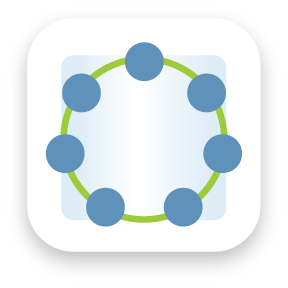
Engineering-Design Aligned Curricula
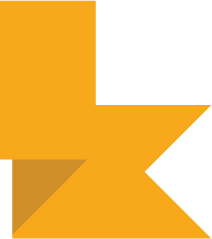
The TeachEngineering hands-on activities featured here, by grade band, exemplify the engineering design process.
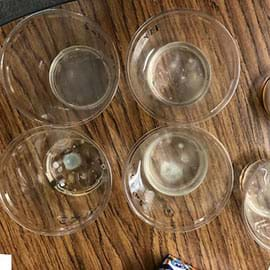
Students investigate what causes them to become sick during the school year. They use the engineering design process to test the classroom lab spaces for bacteria. After their tests, they develop ideas to control the spread of germs within the classroom.

A unique activity for young learners that combines engineering and biology, students design an optimal environment for red wiggler worms in a compost bin.
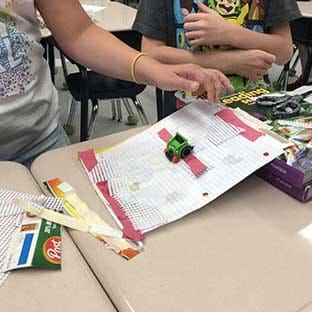
In this maker challenge, students use the engineering design process to design a covering for a portable wheelchair ramp for their school. The design must be easy to use, and allows people to move up the ramp easily and go down slowly.
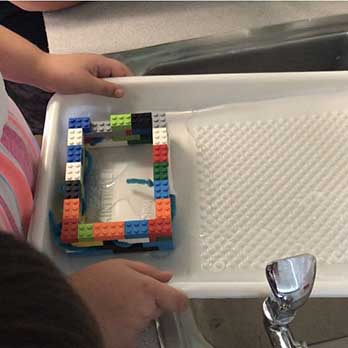
Students employ the engineering design process to create a device that uses water-absorbing crystals for use during a flood or storm surge. They use (or build) a toy house, follow the engineering design process to build their device, and subject the house to tests that mimic a heavy flood or rising ...

Students use the engineering design process to design a bridge out of silkworm cocoons that can hold at least 50 grams. Students can use other materials to supplement the silk bridge, but have a $10 budget.

In this multi-day activity, students explore environments, ecosystems, energy flow and organism interactions by creating a scale model biodome, following the steps of the engineering design process.

Build a model race car out of lifesaver candies, popsicle sticks, straws, and other fun materials! Have students learn about independent, dependent, and control variables, and find out who can make the fastest car given their new knowledge.

Design and construct a bridge for a local city that will have a high strength-to-weight ratio and resist collapse. Have students use their understanding of the engineering design process—and a lot of wooden craft sticks—to achieve their goals.

In this two-part activity, students design and build Rube Goldberg machines. This open-ended challenge employs the engineering design process and may have a pre-determined purpose, such as rolling a marble into a cup from a distance, or let students decide the purposes.

Students are challenged to design and build rockets from two-liter plastic soda bottles that travel as far and straight as possible or stay aloft as long as possible. Guided by the steps of the engineering design process, students first watch a video that shows rocket launch failures and then partic...

Students explore how mass affects momentum in head-on collisions and experience the engineering design process as if they are engineers working on the next big safety feature for passenger cars. They design, create and redesign impact-resistant passenger vehicle compartments for small-size model car...

Students work as teams of engineers to design and build their own trebuchets. They research how to build and test their trebuchets, evaluate their results, and present their results and design process to the class.
Grades 9-12

Student teams follow the steps of the engineering design process as they design and build architecturally inspired cardboard furniture. Given a list of constraints, including limited fabrication materials and tools, groups research architectural styles, brainstorm ideas, make small-scale quick proto...

Students follow the steps of the engineering design process as they design and construct balloons for aerial surveillance. Applying their newfound knowledge, the young engineers build and test balloons that fly carrying small flip cameras that capture aerial images of their school.

Student teams design, build and test small-sized gliders to maximize flight distance and an aerodynamic ratio, applying their knowledge of fluid dynamics to its role in flight. Students experience the entire engineering design process, from brainstorming to CAD (or by hand) drafting, including resea...
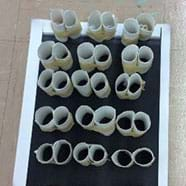
Students learn about human proteins, how their shapes are related to their functions and how DNA protein mutations result in diseases. Then, in a hypothetical engineering scenario, they use common classroom supplies to design and build their own structural, transport and defense protein models to he...

Students develop an app for an Android device that utilizes its built-in internal sensors, specifically the accelerometer. The goal of this activity is to teach programming design and skills using MIT's App Inventor software (free to download from the Internet) as the vehicle for learning.
Welcome to TeachEngineering’s Engineering Design Process curricula for Grade K-2 Educators!

Create popsicles using the engineering design process! In this activity, students work to solve the problems of a local popsicle shop while learning how scientific and engineering concepts play a part in behind-the-scenes design.
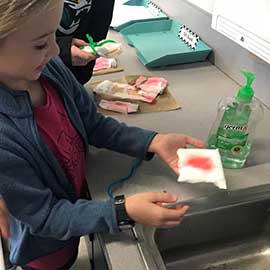
In this maker challenge, students follow the engineering design process and use water-absorbing crystals to create a bandage that can be used in a traumatic situation, like a car accident or hiking accident.
Maker Challenge

Students perform research and design prosthetic prototypes for an animal to use for its survival. They research a set of pre-chosen animals and their habitats. They then create habitats for their animals to live and model 3D prosthetics for the animals to use with modeling clay.

Given scrap cardboard, paper towel tubes, scissors, and glue, how could a student invent their own backscratcher? Engage in the process of how real engineers design products to meet a desired function.

Students design a way for mint plants to keep a constant moisture level for 72 hours. The mint plants must be kept moist since they are young and just starting to establish growth.

Design a customized table top supply organizer inspired by the natural home of a ladybug—or any other insect of a student's choosing—to hold all of their classroom supplies! By the end of this activity, students will understand the properties of biomimicry and the engineering design process.
Welcome to TeachEngineering’s Engineering Design Process curricula for Grade 3-5 Educators!

As students learn about the creation of biodomes, they are introduced to the steps of the engineering design process, including guidelines for brainstorming. They learn how engineers are involved in the design and construction of biodomes and use brainstorming to come up with ideas for possible biod...

Students learn about providing healthcare in a global setting and the importance of wearing protective equipment when treating patients with infectious diseases like Ebola. They learn about biohazard suits, heat transfer through conduction and convection and the engineering design cycle. Student tea...

Working as if they are engineers who work for (the hypothetical) Build-a-Toy Workshop company, students apply their imaginations and the engineering design process to design and build prototype toys with moving parts. They set up electric circuits using batteries, wire and motors. They create plans ...

Whether on Earth or in space, life-threatening illnesses may occur if the water we drink is of poor quality. It’s up to your students to design and build a filtration system for the International Space Station so they can guarantee astronauts get the safe and clean water they need.

Your students have been hired to build a pop rocket, but on a tight budget. Engineering design usually has some constraints and you won’t always have access to the materials you think you might need. But through brainstorming and trial and error, a viable rocket launch is definitely possible!

In this activity, students design and build model houses, then test them against various climate elements, and then re-design and improve them. Using books, websites and photos, students learn about the different types of roofs found on various houses in different environments throughout the world....

Students pretend they are agricultural engineers during the colonial period and design a miniature plow that cuts through a "field" of soil. They are introduced to the engineering design process and learn of several famous historical figures who contributed to plow design.

Students learn how to use wind energy to combat gravity and create lift by creating their own tetrahedral kites capable of flying. They explore different tetrahedron kite designs, learning that the geometry of the tetrahedron shape lends itself well to kites and wings because of its advantageous str...

Students learn the basics of engineering sneakers and shoes. They are challenged to decide on specific design requirements, such as heavy traction or extra cushioning, and then use different materials to create working prototype shoes that meet the design criteria. Includes worksheets.

For this maker challenge, students decide on specific design requirements (such as good traction or deep cushioning), sketch their plans, and then use a variety of materials to build prototype shoes that meet the design criteria.

Students design a temporary habitat for a future classroom pet—a hingeback tortoise. The students investigate hingeback tortoise habitat features as well as the design features of such a habitat. Each group communicates and presents this information to the rest of the class after they research, brai...

When a person gets injured in the wilderness and needs medical attention, rescuers might use a device called a mountain rescue litter specifically designed for difficult evacuations. Design and build a small-sized prototype to save some (potatoes’) lives!

Student teams are challenged to navigate a table tennis ball through a timed obstacle course using only the provided unconventional “tools.” Teams act as engineers by working through the steps of the engineering design process to complete the overall task with each group member responsible to accomp...

Students explore the engineering design process within the context of Dr. Seuss’s book, Bartholomew and the Oobleck. Students study a sample of aloe vera gel (the oobleck) in lab groups. After analyzing the substance, they use the engineering design process to develop and test other substances to ma...

Students explore the use of wind power in the design, construction and testing of "sail cars," which, in this case, are little wheeled carts with masts and sails that are powered by the moving air generated from a box fan. The scientific method is reviewed and reinforced with the use of controls and...

Students engage in the second design challenge of the unit, which is an extension of the maze challenge they solved in the first lesson/activity of this unit. Students extend the ideas learned in the maze challenge with a focus more on the robot design. Specifically, students learn how to design the...

Student groups are challenged to program robots with color sensors to follow a black line. Learning both the logic and skills behind programming robots for this challenge helps students improve their understanding of how robots "think" and widens their appreciation for the complexity involved in pro...

As part of a design challenge, students learn how to use a rotation sensor (located inside the casing of a LEGO® MINDSTORMS ® EV3 motor) to measure how far a robot moves with each rotation. Through experimentation and measurement with the sensor, student pairs determine the relationship between the ...

As the first engineering design challenge of the unit, students are introduced to the logic for solving a maze. Student groups apply logic to program LEGO® MINDSTORMS® EV3 robots to navigate through a maze, first with no sensors, and then with sensors.

Student pairs experience the iterative engineering design process as they design, build, test and improve catching devices to prevent a "naked" egg from breaking when dropped from increasing heights. To support their design work, they learn about materials properties, energy types and conservation o...

Students apply what they have learned about the engineering design process to a real-life problem that affects them and/or their school. They choose a problem as a group, and then follow the engineering design process to come up with and test their design solution.

Working individually or in pairs, students compete to design, create, test and redesign free-standing, weight-bearing towers using Kapla® wooden blocks. The challenge is to build the tallest tower while meeting the design criteria and minimizing the amount of material used—all within a time limit.

Students experience the engineering design process as they design and build accurate and precise catapults using common materials. They use their catapults to participate in a game in which they launch Ping-Pong balls to attempt to hit various targets.
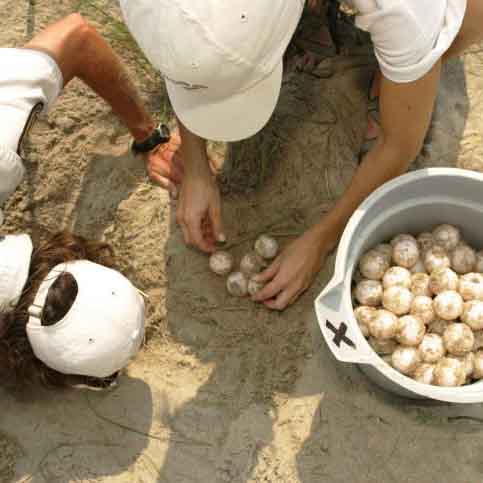
Students employ the full engineering design process to research and design prototypes that could be used to solve the loss of sea turtle life during a hurricane. Students learn about sea turtle nesting behaviors and environmental impacts of hurricanes. Students work collaboratively to build structur...

Students learn how engineering design is applied to solve healthcare problems by using an engineering tool called simulation. While engineering design is commonly used to study and design everything from bridges, factories, airports to space shuttles, the use of engineering design to study healthcar...

Students learn about civil engineers and work through each step of the engineering design process in two mini-activities that prepare them for a culminating challenge to design and build the tallest straw tower possible, given limited time and resources. In the culminating challenge (tallest straw t...

Students apply their knowledge of constructing and programming LEGO® MINDSTORMS® robots to create sumobots—strong robots capable of pushing other robots out of a ring. To meet the challenge, groups follow the steps of the engineering design process and consider robot structure, weight and gear ratio...

Students learn about health risks caused by cooking and heating with inefficient stoves inside homes. They simulate the cook stove scenario and follow the engineering design process steps, including iterative trials, to increase warmth inside a building while reducing air quality problems. A student...

Students work together in small groups, while competing with other teams, to explore the engineering design process through a tower building challenge. They are given a set of design constraints and then conduct online research to learn basic tower-building concepts. During a two-day process and usi...

Students are introduced to the engineering design process, focusing on the concept of brainstorming design alternatives. They learn that engineering is about designing creative ways to improve existing artifacts, technologies or processes, or developing new inventions that benefit society.

Students' understanding of how robotic ultrasonic sensors work is reinforced in a design challenge involving LEGO® MINDSTORMS® EV3 robots and ultrasonic sensors. Student groups program their robots to move freely without bumping into obstacles (toy LEGO people).

Student pairs design and construct small, wind-powered sail cars using limited quantities of drinking straws, masking tape, paper and beads. Teams compete to see which sail car travels the farthest when pushed by the wind (simulated by the use of an electric fan). Students learn about wind and kinet...
Welcome to TeachEngineering’s Engineering Design Process curricula for Grade 6-8 Educators!

Student teams are challenged to design assistive devices that modify crutches to help people carry things such as books and school supplies. Given a list of constraints, including a device weight limit and minimum load capacity, groups brainstorm ideas and then make detailed plans for their best sol...

Students gain experience with the software/system design process, closely related to the engineering design process, to solve a problem. The lesson culminates in a hands-on experience with the design process as students simulate the remote control of a rover.

Students design, build and test looping model roller coasters using foam pipe insulation tubing. They learn about potential and kinetic energy as they test and evaluate designs, addressing the task as if they are engineers. Winning designs have the lowest cost and best aesthetics. Three student work...

Students design and develop a useful assistive device for people challenged by fine motor skill development who cannot grasp and control objects. In the process of designing prototype devices, they learn about the engineering design process and how to use it to solve problems.

Students learn more about assistive devices, specifically biomedical engineering applied to computer engineering concepts, with an engineering challenge to create an automatic floor cleaner computer program. Following the steps of the design process, they design computer programs and test them by pr...

Students groups use balsa wood and glue to build their own towers using some of the techniques they learned from the associated lesson.

Student teams are challenged to design models of Egyptian funerary barges for the purpose of transporting mummies through the underworld to the afterlife. Students design and build prototypes using materials and tools like the ancient Egyptians had at their disposal.

Students become product engineers in a bouncy ball factory as they design and prototype a polymer bouncy ball that meets specific requirements: must be spherical in shape, cannot disintegrate when thrown on the ground, and must bounce.

Students are introduced to the concept and steps of the engineering design process and taught how to apply it. In small groups, students learn of their design challenge (improve a cast for a broken arm), brainstorm solutions, are given materials and create prototypes.

Students become familiar with the engineering design process as they design, build, and test chair prototypes.

In this activity, students undertake a similar engineering challenge as they design and build a filter to remove pepper from an air stream without blocking more than 50% of the air.

Following the steps of the engineering design process and acting as biomedical engineers, student teams use everyday materials to design and develop devices and approaches to unclog blood vessels. Through this open-ended design project, they learn about the circulatory system, biomedical engineering...

Students design and build small doghouses to shelter a (toy) puppy from the heat—and create them within constraints. They apply what they know about light energy and how it travels through various materials, as well as how a material’s color affects its light absorption and reflection. They test the...
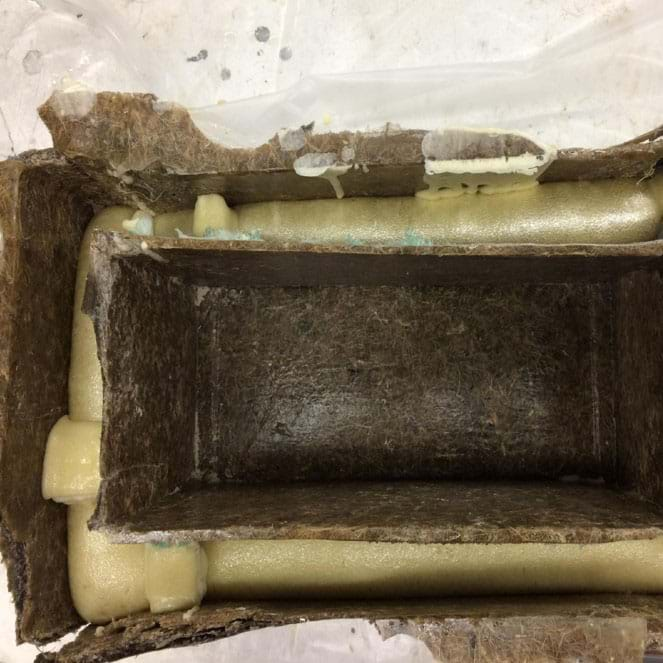
Students learn about convection, conduction, and radiation in order to solve the challenge of designing and building a small insulated cooler with the goal of keeping an ice cube and a Popsicle from melting. This activity uses the engineering design process to build the cooler as well as to measure ...

Students are given a biomedical engineering challenge, which they solve while following the steps of the engineering design process. In a design lab environment, student groups design, create and test prototype devices that help people using crutches carry things, such as books and school supplies.
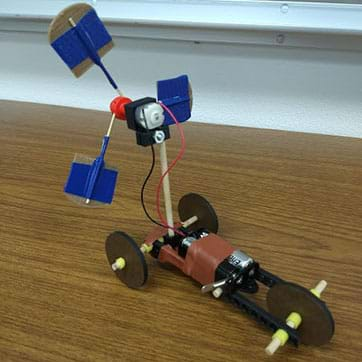
Students build an electric racer vehicle using Tinkercad to design blades for their racers. Students print their designs using a MakerBot printer. Students race their vehicles to see which design travels the furthest distance in the least amount of time.
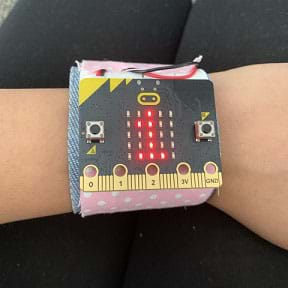
Students use the engineering design process to design, create, and test a pedometer that keeps track of the number of steps a person takes. This maker challenge exposes students to basic coding, micro:bit processor applications, and how programming and engineering can be used to solve health problem...
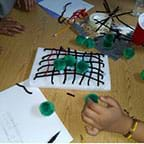
Students learn how to engineer a design for a polymer brush—a coating consisting of polymers that represents an antifouling polymer brush coating for a water filtration surface.

Students program the drive motors of a SparkFun RedBot with a multistep control sequence—a “dance.” Doing this is a great introduction to robotics and improves overall technical literacy by helping students understand that we use programs to control the motion and function of robots, and without the...

Students gain an understanding of the factors that affect wind turbine operation. Following the steps of the engineering design process, engineering teams use simple materials (cardboard and wooden dowels) to build and test their own turbine blade prototypes with the objective of maximizing electric...

Students further their understanding of the engineering design process (EDP) while applying researched information on transportation technology, materials science and bioengineering. Students are given a fictional client statement (engineering challenge) and directed to follow the steps of the EDP t...

Students learn about the process of reverse engineering and how this technique is used to improve upon technology. Students analyze push-toys and draw diagrams of the predicted mechanisms inside the toys. Then, they disassemble the toys and draw the actual inner mechanisms.
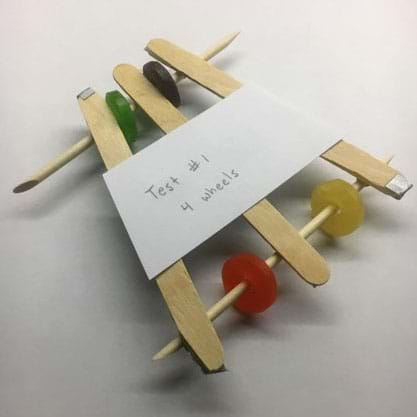
Students design, build, and test model race cars made from simple materials (lifesaver-shaped candies, plastic drinking straws, Popsicle sticks, index cards, tape) as a way to explore independent, dependent and control variables.

Students use the engineering design process to solve a real-world problem—shoe engineering! Working in small teams, they design, build and test a pair of wearable platform or high-heeled shoes, taking into consideration the stress and strain forces that it will encounter from the shoe wearer.

Students' understanding of how robotic color sensors work is reinforced in a design challenge involving LEGO® MINDSTORMS® robots and light sensors. Working in pairs, students program LEGO robots to follow a flashlight as its light beam moves around.

Students further their understanding of the engineering design process while combining mechanical engineering and bioengineering to create an automated medical device.

Students apply the concepts of conduction, convection and radiation as they work in teams to solve two challenges. One problem requires that they maintain the warm temperature of one soda can filled with water at approximately human body temperature, and the other problem is to cause an identical so...

Students design and build a mechanical arm that lifts and moves an empty 12-ounce soda can using hydraulics for power. Small design teams (1-2 students each) design and build a single axis for use in the completed mechanical arm.

Using ordinary classroom materials, students act as biomedical engineering teams challenged to design prototype models that demonstrate semipermeability to help medical students learn about kidney dialysis. A model consists of two layers of a medium separated by material acting as the membrane. Grou...
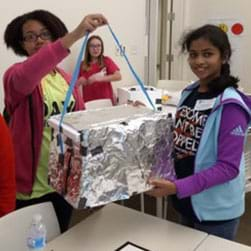
Students brainstorm, design, and build a cooler and monitor its effectiveness to keep a bottle of ice water cold in comparison to a bottle of ice water left at room temperature. Students engage in design by choosing from a range of materials to build their prototype.

Students learn about how biomedical engineers create assistive devices for persons with fine motor skill disabilities. They do this by designing, building and testing their own hand "gripper" prototypes that are able to grasp and lift a 200 ml cup of sand.

Based on their experience exploring the Mars rover Curiosity and learning about what engineers must go through to develop a vehicle like Curiosity, students create Android apps that can control LEGO® MINDSTORMS® robots, simulating the difficulties the Curiosity rover could encounter. The activity go...

Acting as biomedical engineers, students design, build, test and redesign prototype heart valves using materials such as waterproof tape, plastic tubing, flexible plastic and foam sheets, clay, wire and pipe cleaners. They test them with flowing water, representing blood moving through the heart.

Students further their understanding of the engineering design process (EDP) while being introduced to assistive technology devices and biomedical engineering. They are given a fictional client statement and are tasked to follow the steps of the EDP to design and build small-scale, off-road wheelcha...

Student groups create and test oil spill cleanup kits that are inexpensive and accessible for homeowners or for big companies to give to individual workers—to aid in home, community or environmental oil spill cleanup process.

Using paper, paper clips and tape, student teams design flying/falling devices to stay in the air as long as possible and land as close as possible to a given target. Student teams use the steps of the engineering design process to guide them through the initial conception, evaluation, testing and r...

Students learn how biomedical engineers work with engineers and other professionals to develop dependable medical devices. Student teams brainstorm, sketch, design and create prototypes of suction pump protection devices to keep fluid from backing up and ruining the pump motors.

Students experience the steps of the engineering design process as they design solutions for a real-world problem that negatively affects the environment. They use plastic tubing and assorted materials such as activated carbon, cotton balls, felt and cloth to create filters with the capability to re...

Students design and create sensory integration toys for young children with developmental disabilities—an engineering challenge that combines the topics of biomedical engineering, engineering design and human senses. Students learn the steps of the engineering design process (EDP) and how to use it ...
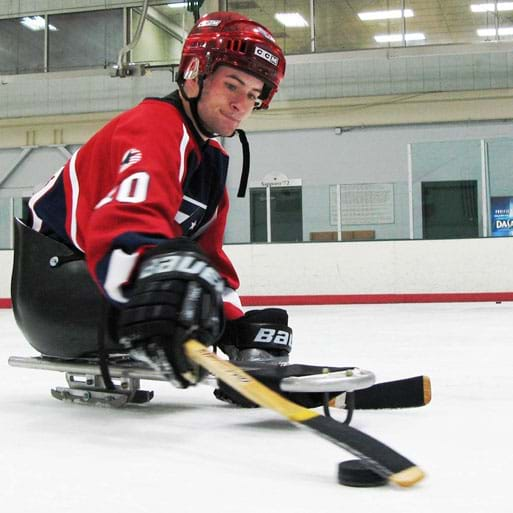
Students are asked to design a hockey stick for a school’s new sled hockey team. Using the engineering design process, students act as material engineers to create hockey sticks that have different interior structures using multiple materials that can withstand flexure testing.

Working as if they were engineers, students design and construct model solar sails made of aluminum foil to move cardboard tube satellites through “space” on a string. Working in teams, they follow the engineering design thinking steps—ask, research, imagine, plan, create, test, improve—to design an...

Students follow the steps of the engineering design process to create their own ear trumpet devices (used before modern-day hearing aids), including testing them with a set of reproducible sounds.

Student pairs design, build, and test model vehicles capable of rolling down a ramp and then coasting freely as far as possible. The challenge is to make the vehicles entirely out of dry pasta using only adhesive (such as hot glue) to hold the components together.

Students are challenged to design, build and test small-scale launchers while they learn and follow the steps of the engineering design process. For the challenge, the "slingers" must be able to aim and launch Ping-Pong balls 20 feet into a goal using ordinary building materials such as tape, string...

Students act as engineers to solve a hypothetical problem that has occurred in the Swiss Alps due to a natural seismic disaster. Working in groups, they follow the engineering design process steps to create model sleds that meet the requirements to transport materials to people in distress that live...

Students learn more about how muscles work and how biomedical engineers can help keep the muscular system healthy. Following the engineering design process, they create their own biomedical device to aid in the recovery of a strained bicep.

In this activity, student groups design and build three types of towers (guyed or cable-supported, free-standing or self-standing, and monopole), engineering them to meet the requirements that they hold an egg one foot high for 15 seconds.
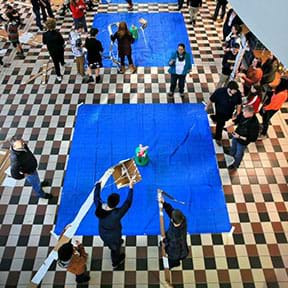
A classic engineering challenge involves designing and building devices that can deliver necessary goods to “Toxic Island.” Working within specific constraints, students design a device that must not touch the water or island, and must deliver supplies accurately and quickly.

Students are given a difficult challenge that requires they integrate what they have learned so far in the unit about wait blocks, loops and switches. They incorporate these tools into their programming of the LEGO® MINDSTORMS® robots to perform different tasks depending on input from a sound sensor...

Students apply their knowledge of scale and geometry to design wearables that would help people in their daily lives, perhaps for medical reasons or convenience. Like engineers, student teams follow the steps of the design process, to research the wearable technology field (watching online videos an...

Students reinforce an antenna tower made from foam insulation so that it can withstand a 480 N-cm bending moment (torque) and a 280 N-cm twisting moment (torque) with minimal deflection.

Students further their understanding of the engineering design process while combining mechanical engineering and bio-engineering to create assistive devices. During this extended activity (seven class periods), students are given a fictional client statement and required to follow the steps of the ...
Welcome to TeachEngineering’s Engineering Design Process curricula for Grade 9-12 Educators!

Students experience the engineering design process as they design and construct lower-leg prostheses in response to a hypothetical zombie apocalypse scenario. Building on what they learned and researched in the associated lesson, they design and fabricate a replacement prosthetic limb using given sp...

In this culminating activity, student groups act as engineering design teams to derive equations to determine the stability of specific above-ground storage tank scenarios with given tank specifications and liquid contents. With their flotation analyses completed and the stability determined, studen...

Students apply the design process to the problem of hiding a message in a digital image using steganographic methods, a PictureEdit Java class, and API (provided as an attachment). They identify the problems and limitations associated with this task, brainstorm solutions, select a solution, and impl...
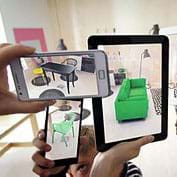
Students explore augmented reality programs, including muscle and bone overlays and body tracking recording program, using Unity and Microsoft Visual Studio and develop ways to modify, enhance, and redesign the program to meet a particular real-world need.

Student teams design their own booms (bridges) and engage in a friendly competition with other teams to test their designs. Each team strives to design a boom that is light, can hold a certain amount of weight, and is affordable to build.

Students use Arduino microcontrollers and light-sensitive resistors (photocells) to sense the ambient light levels in a room and turn LEDs on and off based on those readings. They are challenged to personalize their basic night-lights with the use of more LEDs, if/else statements and voltage divider...

Students gain practice in Arduino fundamentals as they design their own small-sized prototype light sculptures to light up a hypothetical courtyard. They program Arduino microcontrollers to control the lighting behavior of at least three light-emitting diodes (LEDs) to create imaginative light displ...
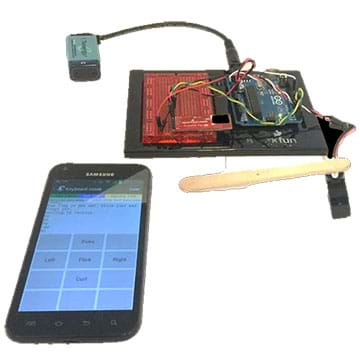
Students learn how to control an Arduino servo wirelessly using a simple phone application, Bluetooth module and an Android phone. This prepares them to wirelessly control their own projects.

Student teams design and build shoe prototypes that convert between high heels and athletic shoes. They apply their knowledge about the mechanics of walking and running as well as shoe design (as learned in the associated lesson) to design a multifunctional shoe that is both fashionable and function...

Students use servos and flex sensors to make simple, one-jointed, finger robots. They use Arduino microcontrollers, create circuits and write code to read finger flexes and send angle info to servos. They explore the constrain, map and smoothing commands. Can teams combine fingers to create an entir...
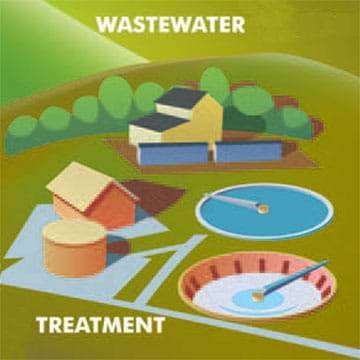
Student teams design, construct, test and improve small working models of water treatment plant processes to filter out contaminants and reclaim resources from simulated wastewater. They keep to a materials budget and earn money from reclaimed materials. They conduct before/after water quality tests...

Students are introduced to the biomechanical characteristics of helmets, and are challenged to incorporate them into designs for helmets used for various applications.
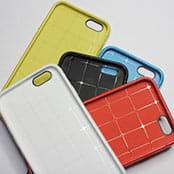
Students design and create their own nano-polymer smartphone case. Students choose their design, mix their nano-polymer (based in silicone) with starch and add coloring of their choice. While students think critically about their design, they embed strings in the nano-polymer material to optimize bo...

Student teams create laparoscopic surgical robots designed to reduce the invasiveness of diagnosing endometriosis and investigate how the disease forms and spreads. Using a synthetic abdominal cavity simulator, students test and iterate their remotely controlled, camera-toting prototype devices, whi...

Students learn about the mathematical characteristics and reflective property of ellipses by building their own elliptical-shaped pool tables. After a slide presentation introduction to ellipses, student “engineering teams” follow the steps of the engineering design process to develop prototypes, wh...

Following the steps of the iterative engineering design process, student teams use what they learned in the previous lessons and activity in this unit to research and choose materials for their model heart valves and test those materials to compare their properties to known properties of real heart ...

Students design, build and test small-sized vehicle prototypes that transfer various types of potential energy into motion. To complete the Go Public phase of the legacy cycle, students demonstrate their understanding of how potential energy may be transferred into kinetic energy.

Students explore how to modify surfaces such as wood or cotton fabric at the nanoscale. They create specialized materials with features such as waterproofing and stain resistance. The challenge starts with student teams identifying an intended user and developing scenarios for using their developed ...

Students apply their understanding of light polarization and attenuation to design, fabricate, test and refine their own prototype sunglasses that better reduce glare and lower light intensity compared to available sunglasses, and better protect eyes from UVA and UVB radiation. They meet the project...
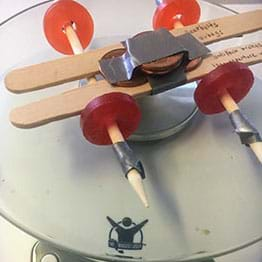
High school students design, build, and test model race cars made from simple materials (lifesaver-shaped candies, plastic drinking straws, Popsicle sticks, index cards, tape) as a way to explore independent, dependent and control variables.

During this engineering design/build project, students investigate many different solutions to a problem. Their design challenge is to find a way to get school t-shirts up into the stands during home sporting events. They follow the steps of the engineering design process to design and build a usabl...

Students work as materials and chemical engineers to develop a bouncy ball using a select number of materials. They develop a plan of what materials they might need to design their product, and then create, test, and evaluate their bouncy ball.

Student pairs design, redesign and perform simple experiments to test the differences in thermal conductivity (heat flow) through different media (foil and thin steel). Then students create visual diagrams of their findings that can be understood by anyone with little background on the subject, appl...
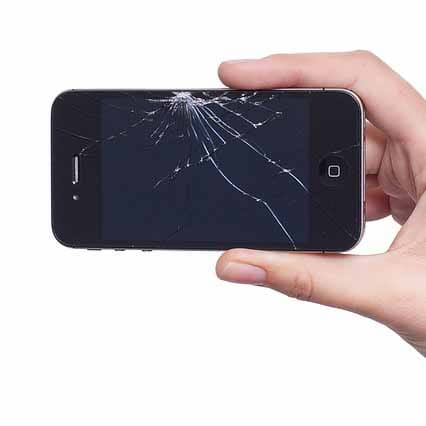
Students follow the steps of the engineering design process to design an improved smartphone case. As if they are materials engineers, they evaluate how to build a smartphone case and study physical properties, chemical properties, and tessellations. They analyze materials, design and improve a prot...

Students learn how to connect Arduino microcontroller boards to computers and write basic code to blink LEDs. Provided steps guide students through the connection process, troubleshooting common pitfalls and writing their first Arduino programs. Then they independently write their own code to blink ...
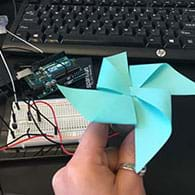
Students control small electric motors using Arduino microcontrollers to make little spinning fans made with folded and glued paper sticky notes. They build basic circuits and modify code, before applying the principles to create their own more-complicated motor-controlled projects. Advanced project...

Students create a water bottle from common materials used in purification tools that can clean dirty water as an inexpensive alternative to a modern filter. Students may iterate upon their design based off their experiment and the designs of their classmates after initial testing.
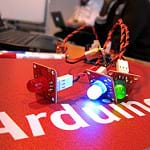
Students take on the challenge of assembling a light sensor circuit in order to observe its readings using the Arduino Serial Monitor. They also create their own unique visualization through software called Processing. They learn how to use calibration and smoothing along the way to capture a better...

Students investigate Python and Jupyter Notebook to analyze real astronomical images in order to calculate the interstellar distance to a star cluster across the Milky Way from our own Solar System. They learn how to write Python code that runs in a Jupyter Notebook so they can determine the brightn...

Students design, build and evaluate a spring-powered mouse trap racer. For evaluation, teams equip their racers with an intelligent brick from a LEGO© MINDSTORMS© EV3 Education Core Set and a HiTechnic© acceleration sensor.

Students apply their knowledge of linear regression and design to solve a real-world challenge to create a better packing solution for shipping cell phones. They make composite material packaging containers using cardboard, fabric, plastic, paper and/or rubber bands to create four different-weight p...

Students learn how engineers harness the energy of the wind to produce power by following the engineering design process as they prototype two types of wind turbines and test to see which works best. Students also learn how engineers decide where to place wind turbines, and the advantages and disadv...

Students experience the engineering design process as they design, fabricate, test and redesign their own methods for encapsulation of a (hypothetical) new miracle drug. The objective is to delay the drug release by a certain time and have a long release duration—patterned after the timed release re...

In this hands-on activity, student groups design, build, test and improve devices to pump water as if they were engineers helping a rural village meet their drinking water supply. Students keep track of their materials costs, and calculate power and cost efficiencies of the prototype pumps.

Students practice human-centered design by imagining, designing and prototyping a product to improve classroom accessibility for the visually impaired. Student teams follow the steps of the engineering design process to formulate their ideas, draw them by hand and using free, online Tinkercad softwa...

Students write Arduino code and use a “digital sandbox” to create new colors out of the three programming primary colors: green, red and blue. They develop their own functions, use them to make disco light shows, and vary the pattern and colors of their shows.

Student teams each design, build and test a composite material for use as a concrete building block for shantytown use. The design challenge constraints include: using inexpensive and readily available materials, chemically resistant, physically durable, cost-effective and aesthetically pleasing. Th...
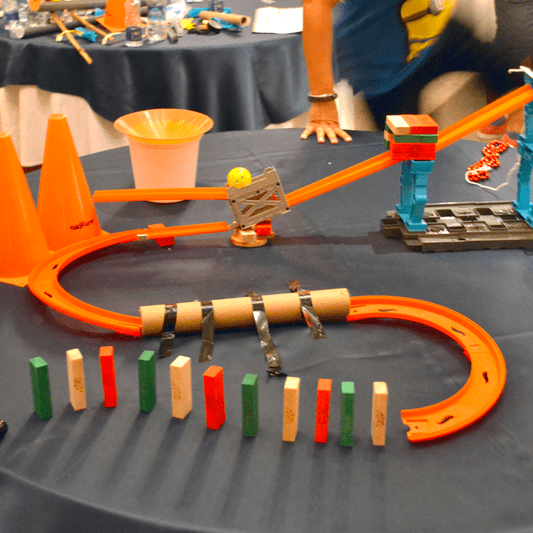
Students research and learn about simple machines and other mechanisms through learning about a Rube Goldberg machine. Student teams design and build their own Rube Goldberg devices that incorporate at least six simple machines. This project is open-ended with much potential for creativity and fun.

Students explore energy efficiency, focusing on renewable energy, by designing and building flat-plate solar water heaters. They calculate the efficiency of the solar water heaters during initial and final tests and compare the efficiencies to those of models currently sold on the market (requiring ...

Refreshed with an understanding of the six simple machines; screw, wedge, pully, incline plane, wheel and axle, and lever, student groups receive materials and an allotted amount of time to act as mechanical engineers to design and create machines that can complete specified tasks.
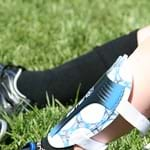
Students engineer a working pair of shin guards for soccer or similar contact sport from everyday materials. Since many factors go into the design of a shin guard, students follow the engineering design process to create a prototype.

Students work through an online tutorial on MIT's App Inventor to learn how to create Android applications. Using those skills, they create their own applications and use them to collect data from an Android device accelerometer and store that data to databases.

Students learn about the engineering design process and how products may be reinvented to serve new purposes. Working in groups, students design a type of slime. After creating their slime, the teacher turns out the lights and the students see that the slime they made actually glows in the dark!

Students are challenged to design and program Arduino-controlled robots that behave like simple versions of the automated guided vehicles engineers design for real-world applications. Using Arduino microcontroller boards, infrared (IR) sensors, servomotors, attachable wheels and plastic containers (...

Students imagine they are stranded on an island and must create the brightest light possible with the meager supplies they have on hand in order to gain the attention of a rescue airplane. In small groups, students create circuits using items in their "survival kits" to create maximum voltage, measu...

Students work within constraints to construct model trusses and then test them to failure as a way to evaluate the relative strength of different truss configurations and construction styles. Within each group, each student builds two exact copies of the team's truss configuration using his/her own ...

Students are challenged to find a way to get school t-shirts up into the stands during sporting events. They work with a real client (if possible, such as a cheerleading squad, booster club or band) to determine the requirements and constraints that would make the project a success, including a budg...
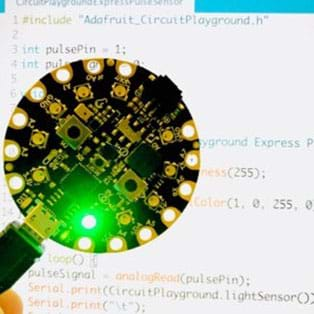
Biomedical engineers design, create, and test health technology that measure all sorts of physical functions in the body, including heartbeat. Students play the role of biomedical engineers in this activity and create a device that helps visualize heartbeats.
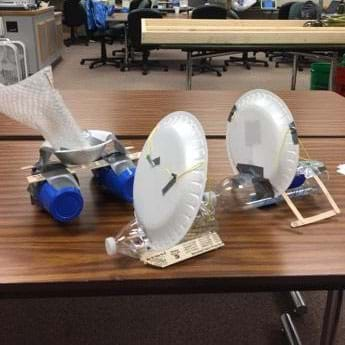
Students use a variety of common office and household supplies to design a boat. Their goal: to not only design the fastest boat, but also take into account how much mass or “cargo” the boat can carry, the stability of the boat in the water, the total mass of the boat, boat aesthetics, and how much ...

Students are challenged to design and build wind chimes using their knowledge of physics and sound waves, and under given constraints such as weight, cost and number of musical notes it must generate.
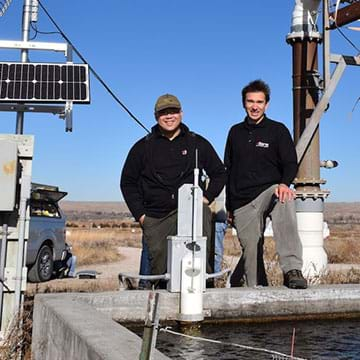
Students learn how to send signals (such as from buttons or sensors) from one system to another using XBee radio communication modules. By activity end, they are able to control LEDs and motors wirelessly using Arduino microcontrollers and XBee shields. Introduces the concept of the Internet of thin...
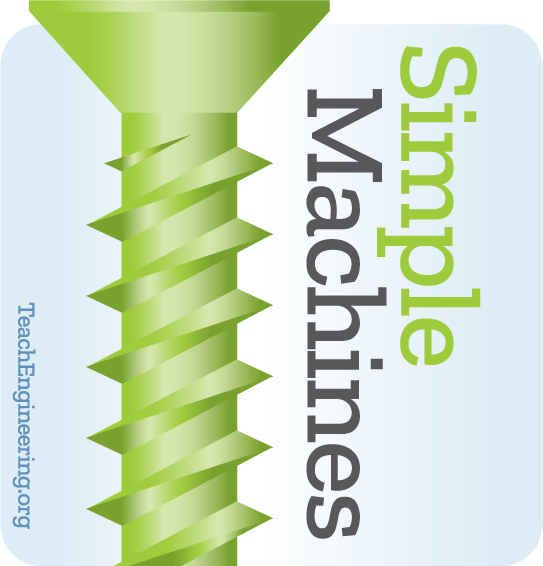
- Utility Menu
Design Thinking in Education
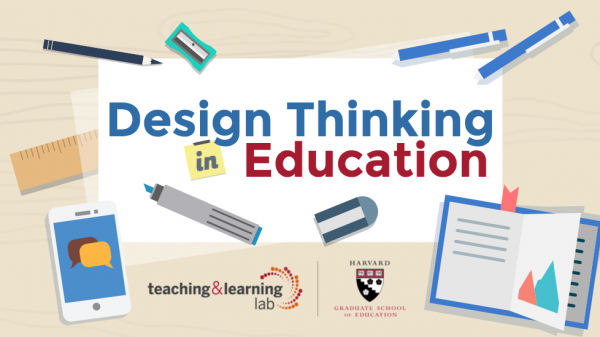
Design Thinking is a mindset and approach to learning, collaboration, and problem solving. In practice, the design process is a structured framework for identifying challenges, gathering information, generating potential solutions, refining ideas, and testing solutions. Design Thinking can be flexibly implemented; serving equally well as a framework for a course design or a roadmap for an activity or group project.
Download the HGSE Design Thinking in Education infographic to learn more about what Design Thinking is and why it is powerful in the classroom.
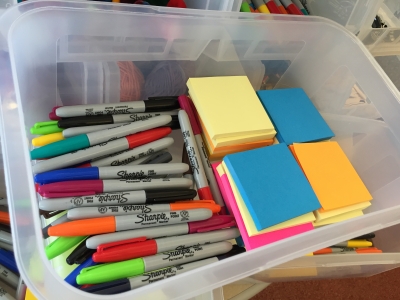
Design Consultation for projects, session, and courses, including active learning and facilitation strategies.
Brainstorming Kits including Post-it notes, Sharpie markers, and stickable chart paper.
Physical Prototyping Cart with dozens of creative, constructivist supplies, including felt, yarn, foil, craft sticks, rubber bands, Play-Doh, Legos, and more.
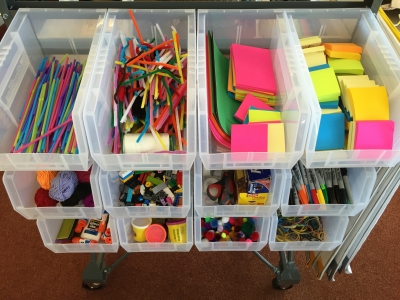
For more information about TLL resources or to check-out brainstorming or prototyping materials, contact Brandon Pousley .
Other Resources There are dozens of ready-made activities, workbooks, and curricular guides available online. We suggest starting with the following:
Stanford — d.school and the The Bootcamp Bootleg IDEO — ' Design Thinking for Educators ' and the Design ThinkingToolkit Business Innovation Factory — 'Teachers Design for Education' and the TD4Ed Curriculum Research — Design Thinking in Pedagogy — Luka, Ineta (2014). Design Thinking in Pedagogy. Journal of Education Culture and Society, No. 2, 63-74.
- Business Essentials
- Leadership & Management
- Credential of Leadership, Impact, and Management in Business (CLIMB)
- Entrepreneurship & Innovation
- Digital Transformation
- Finance & Accounting
- Business in Society
- For Organizations
- Support Portal
- Media Coverage
- Founding Donors
- Leadership Team

- Harvard Business School →
- HBS Online →
- Business Insights →
Business Insights
Harvard Business School Online's Business Insights Blog provides the career insights you need to achieve your goals and gain confidence in your business skills.
- Career Development
- Communication
- Decision-Making
- Earning Your MBA
- Negotiation
- News & Events
- Productivity
- Staff Spotlight
- Student Profiles
- Work-Life Balance
- AI Essentials for Business
- Alternative Investments
- Business Analytics
- Business Strategy
- Business and Climate Change
- Design Thinking and Innovation
- Digital Marketing Strategy
- Disruptive Strategy
- Economics for Managers
- Entrepreneurship Essentials
- Financial Accounting
- Global Business
- Launching Tech Ventures
- Leadership Principles
- Leadership, Ethics, and Corporate Accountability
- Leading with Finance
- Management Essentials
- Negotiation Mastery
- Organizational Leadership
- Power and Influence for Positive Impact
- Strategy Execution
- Sustainable Business Strategy
- Sustainable Investing
- Winning with Digital Platforms
What Is Creative Problem-Solving & Why Is It Important?

- 01 Feb 2022
One of the biggest hindrances to innovation is complacency—it can be more comfortable to do what you know than venture into the unknown. Business leaders can overcome this barrier by mobilizing creative team members and providing space to innovate.
There are several tools you can use to encourage creativity in the workplace. Creative problem-solving is one of them, which facilitates the development of innovative solutions to difficult problems.
Here’s an overview of creative problem-solving and why it’s important in business.
Access your free e-book today.
What Is Creative Problem-Solving?
Research is necessary when solving a problem. But there are situations where a problem’s specific cause is difficult to pinpoint. This can occur when there’s not enough time to narrow down the problem’s source or there are differing opinions about its root cause.
In such cases, you can use creative problem-solving , which allows you to explore potential solutions regardless of whether a problem has been defined.
Creative problem-solving is less structured than other innovation processes and encourages exploring open-ended solutions. It also focuses on developing new perspectives and fostering creativity in the workplace . Its benefits include:
- Finding creative solutions to complex problems : User research can insufficiently illustrate a situation’s complexity. While other innovation processes rely on this information, creative problem-solving can yield solutions without it.
- Adapting to change : Business is constantly changing, and business leaders need to adapt. Creative problem-solving helps overcome unforeseen challenges and find solutions to unconventional problems.
- Fueling innovation and growth : In addition to solutions, creative problem-solving can spark innovative ideas that drive company growth. These ideas can lead to new product lines, services, or a modified operations structure that improves efficiency.

Creative problem-solving is traditionally based on the following key principles :
1. Balance Divergent and Convergent Thinking
Creative problem-solving uses two primary tools to find solutions: divergence and convergence. Divergence generates ideas in response to a problem, while convergence narrows them down to a shortlist. It balances these two practices and turns ideas into concrete solutions.
2. Reframe Problems as Questions
By framing problems as questions, you shift from focusing on obstacles to solutions. This provides the freedom to brainstorm potential ideas.
3. Defer Judgment of Ideas
When brainstorming, it can be natural to reject or accept ideas right away. Yet, immediate judgments interfere with the idea generation process. Even ideas that seem implausible can turn into outstanding innovations upon further exploration and development.
4. Focus on "Yes, And" Instead of "No, But"
Using negative words like "no" discourages creative thinking. Instead, use positive language to build and maintain an environment that fosters the development of creative and innovative ideas.
Creative Problem-Solving and Design Thinking
Whereas creative problem-solving facilitates developing innovative ideas through a less structured workflow, design thinking takes a far more organized approach.
Design thinking is a human-centered, solutions-based process that fosters the ideation and development of solutions. In the online course Design Thinking and Innovation , Harvard Business School Dean Srikant Datar leverages a four-phase framework to explain design thinking.
The four stages are:

- Clarify: The clarification stage allows you to empathize with the user and identify problems. Observations and insights are informed by thorough research. Findings are then reframed as problem statements or questions.
- Ideate: Ideation is the process of coming up with innovative ideas. The divergence of ideas involved with creative problem-solving is a major focus.
- Develop: In the development stage, ideas evolve into experiments and tests. Ideas converge and are explored through prototyping and open critique.
- Implement: Implementation involves continuing to test and experiment to refine the solution and encourage its adoption.
Creative problem-solving primarily operates in the ideate phase of design thinking but can be applied to others. This is because design thinking is an iterative process that moves between the stages as ideas are generated and pursued. This is normal and encouraged, as innovation requires exploring multiple ideas.
Creative Problem-Solving Tools
While there are many useful tools in the creative problem-solving process, here are three you should know:
Creating a Problem Story
One way to innovate is by creating a story about a problem to understand how it affects users and what solutions best fit their needs. Here are the steps you need to take to use this tool properly.
1. Identify a UDP
Create a problem story to identify the undesired phenomena (UDP). For example, consider a company that produces printers that overheat. In this case, the UDP is "our printers overheat."
2. Move Forward in Time
To move forward in time, ask: “Why is this a problem?” For example, minor damage could be one result of the machines overheating. In more extreme cases, printers may catch fire. Don't be afraid to create multiple problem stories if you think of more than one UDP.
3. Move Backward in Time
To move backward in time, ask: “What caused this UDP?” If you can't identify the root problem, think about what typically causes the UDP to occur. For the overheating printers, overuse could be a cause.
Following the three-step framework above helps illustrate a clear problem story:
- The printer is overused.
- The printer overheats.
- The printer breaks down.
You can extend the problem story in either direction if you think of additional cause-and-effect relationships.
4. Break the Chains
By this point, you’ll have multiple UDP storylines. Take two that are similar and focus on breaking the chains connecting them. This can be accomplished through inversion or neutralization.
- Inversion: Inversion changes the relationship between two UDPs so the cause is the same but the effect is the opposite. For example, if the UDP is "the more X happens, the more likely Y is to happen," inversion changes the equation to "the more X happens, the less likely Y is to happen." Using the printer example, inversion would consider: "What if the more a printer is used, the less likely it’s going to overheat?" Innovation requires an open mind. Just because a solution initially seems unlikely doesn't mean it can't be pursued further or spark additional ideas.
- Neutralization: Neutralization completely eliminates the cause-and-effect relationship between X and Y. This changes the above equation to "the more or less X happens has no effect on Y." In the case of the printers, neutralization would rephrase the relationship to "the more or less a printer is used has no effect on whether it overheats."
Even if creating a problem story doesn't provide a solution, it can offer useful context to users’ problems and additional ideas to be explored. Given that divergence is one of the fundamental practices of creative problem-solving, it’s a good idea to incorporate it into each tool you use.
Brainstorming
Brainstorming is a tool that can be highly effective when guided by the iterative qualities of the design thinking process. It involves openly discussing and debating ideas and topics in a group setting. This facilitates idea generation and exploration as different team members consider the same concept from multiple perspectives.
Hosting brainstorming sessions can result in problems, such as groupthink or social loafing. To combat this, leverage a three-step brainstorming method involving divergence and convergence :
- Have each group member come up with as many ideas as possible and write them down to ensure the brainstorming session is productive.
- Continue the divergence of ideas by collectively sharing and exploring each idea as a group. The goal is to create a setting where new ideas are inspired by open discussion.
- Begin the convergence of ideas by narrowing them down to a few explorable options. There’s no "right number of ideas." Don't be afraid to consider exploring all of them, as long as you have the resources to do so.
Alternate Worlds
The alternate worlds tool is an empathetic approach to creative problem-solving. It encourages you to consider how someone in another world would approach your situation.
For example, if you’re concerned that the printers you produce overheat and catch fire, consider how a different industry would approach the problem. How would an automotive expert solve it? How would a firefighter?
Be creative as you consider and research alternate worlds. The purpose is not to nail down a solution right away but to continue the ideation process through diverging and exploring ideas.

Continue Developing Your Skills
Whether you’re an entrepreneur, marketer, or business leader, learning the ropes of design thinking can be an effective way to build your skills and foster creativity and innovation in any setting.
If you're ready to develop your design thinking and creative problem-solving skills, explore Design Thinking and Innovation , one of our online entrepreneurship and innovation courses. If you aren't sure which course is the right fit, download our free course flowchart to determine which best aligns with your goals.

About the Author

How it works
For Business
Join Mind Tools
Article • 4 min read
The Problem-Solving Process
Looking at the basic problem-solving process to help keep you on the right track.
By the Mind Tools Content Team
Problem-solving is an important part of planning and decision-making. The process has much in common with the decision-making process, and in the case of complex decisions, can form part of the process itself.
We face and solve problems every day, in a variety of guises and of differing complexity. Some, such as the resolution of a serious complaint, require a significant amount of time, thought and investigation. Others, such as a printer running out of paper, are so quickly resolved they barely register as a problem at all.

Despite the everyday occurrence of problems, many people lack confidence when it comes to solving them, and as a result may chose to stay with the status quo rather than tackle the issue. Broken down into steps, however, the problem-solving process is very simple. While there are many tools and techniques available to help us solve problems, the outline process remains the same.
The main stages of problem-solving are outlined below, though not all are required for every problem that needs to be solved.

1. Define the Problem
Clarify the problem before trying to solve it. A common mistake with problem-solving is to react to what the problem appears to be, rather than what it actually is. Write down a simple statement of the problem, and then underline the key words. Be certain there are no hidden assumptions in the key words you have underlined. One way of doing this is to use a synonym to replace the key words. For example, ‘We need to encourage higher productivity ’ might become ‘We need to promote superior output ’ which has a different meaning.
2. Analyze the Problem
Ask yourself, and others, the following questions.
- Where is the problem occurring?
- When is it occurring?
- Why is it happening?
Be careful not to jump to ‘who is causing the problem?’. When stressed and faced with a problem it is all too easy to assign blame. This, however, can cause negative feeling and does not help to solve the problem. As an example, if an employee is underperforming, the root of the problem might lie in a number of areas, such as lack of training, workplace bullying or management style. To assign immediate blame to the employee would not therefore resolve the underlying issue.
Once the answers to the where, when and why have been determined, the following questions should also be asked:
- Where can further information be found?
- Is this information correct, up-to-date and unbiased?
- What does this information mean in terms of the available options?
3. Generate Potential Solutions
When generating potential solutions it can be a good idea to have a mixture of ‘right brain’ and ‘left brain’ thinkers. In other words, some people who think laterally and some who think logically. This provides a balance in terms of generating the widest possible variety of solutions while also being realistic about what can be achieved. There are many tools and techniques which can help produce solutions, including thinking about the problem from a number of different perspectives, and brainstorming, where a team or individual write as many possibilities as they can think of to encourage lateral thinking and generate a broad range of potential solutions.
4. Select Best Solution
When selecting the best solution, consider:
- Is this a long-term solution, or a ‘quick fix’?
- Is the solution achievable in terms of available resources and time?
- Are there any risks associated with the chosen solution?
- Could the solution, in itself, lead to other problems?
This stage in particular demonstrates why problem-solving and decision-making are so closely related.
5. Take Action
In order to implement the chosen solution effectively, consider the following:
- What will the situation look like when the problem is resolved?
- What needs to be done to implement the solution? Are there systems or processes that need to be adjusted?
- What will be the success indicators?
- What are the timescales for the implementation? Does the scale of the problem/implementation require a project plan?
- Who is responsible?
Once the answers to all the above questions are written down, they can form the basis of an action plan.
6. Monitor and Review
One of the most important factors in successful problem-solving is continual observation and feedback. Use the success indicators in the action plan to monitor progress on a regular basis. Is everything as expected? Is everything on schedule? Keep an eye on priorities and timelines to prevent them from slipping.
If the indicators are not being met, or if timescales are slipping, consider what can be done. Was the plan realistic? If so, are sufficient resources being made available? Are these resources targeting the correct part of the plan? Or does the plan need to be amended? Regular review and discussion of the action plan is important so small adjustments can be made on a regular basis to help keep everything on track.
Once all the indicators have been met and the problem has been resolved, consider what steps can now be taken to prevent this type of problem recurring? It may be that the chosen solution already prevents a recurrence, however if an interim or partial solution has been chosen it is important not to lose momentum.
Problems, by their very nature, will not always fit neatly into a structured problem-solving process. This process, therefore, is designed as a framework which can be adapted to individual needs and nature.
Join Mind Tools and get access to exclusive content.
This resource is only available to Mind Tools members.
Already a member? Please Login here

Try Mind Tools for FREE
Get unlimited access to all our career-boosting content and member benefits with our 7-day free trial.
Sign-up to our newsletter
Subscribing to the Mind Tools newsletter will keep you up-to-date with our latest updates and newest resources.
Subscribe now
Business Skills
Personal Development
Leadership and Management
Member Extras
Most Popular
Newest Releases

What Is Gibbs' Reflective Cycle?

Team Briefings
Mind Tools Store
About Mind Tools Content
Discover something new today
Onboarding with steps.
Helping New Employees to Thrive
NEW! Pain Points Podcast - Perfectionism
Why Am I Such a Perfectionist?
How Emotionally Intelligent Are You?
Boosting Your People Skills
Self-Assessment
What's Your Leadership Style?
Learn About the Strengths and Weaknesses of the Way You Like to Lead
Recommended for you
Simplex thinking.
8 Steps for Solving Complex Problems
Business Operations and Process Management
Strategy Tools
Customer Service
Business Ethics and Values
Handling Information and Data
Project Management
Knowledge Management
Self-Development and Goal Setting
Time Management
Presentation Skills
Learning Skills
Career Skills
Communication Skills
Negotiation, Persuasion and Influence
Working With Others
Difficult Conversations
Creativity Tools
Self-Management
Work-Life Balance
Stress Management and Wellbeing
Coaching and Mentoring
Change Management
Team Management
Managing Conflict
Delegation and Empowerment
Performance Management
Leadership Skills
Developing Your Team
Talent Management
Problem Solving
Decision Making
Member Podcast

IMAGES
VIDEO
COMMENTS
A simple overview of design thinking as a problem solving process. Problem-Solving and Two Schools of Thought. Design thinking is concerned with solving problems through design. The idea being that the future output of the process will provide a better answer than the one already available or if nothing is available - something entirely new.
January 10th, 2024 6 min read. Summary. The design thinking process is a problem-solving design methodology that helps you develop solutions in a human-focused way. Initially designed at Stanford's d.school, the five stage design thinking method can help solve ambiguous questions, or more open-ended problems. Learn how these five steps can ...
Design thinking is an innovative problem-solving process rooted in a set of skills.The approach has been around for decades, but it only started gaining traction outside of the design community after the 2008 Harvard Business Review article [subscription required] titled "Design Thinking" by Tim Brown, CEO and president of design company IDEO.
The Design Thinking process typically consists of several iterative stages, each focusing on a different aspect of problem-solving and innovation. While the specific steps and terminology may vary slightly depending on the source or context, the core principles remain consistent. Here's a generalized overview of the Design Thinking process:
The Design Thinking process is used to apply the Design Thinking ideology to real-world, wicked problems. It offers a solution-based approach to problem-solving. Unlike problem-based thinking, which tends to fixate on obstacles and limitations, the Design Thinking process is all about outcomes.
Design Thinking is a problem-solving framework. Unlike other brainstorming methods, design thinking uses empathetic observation to focus on human-centered needs first before diving into ideation. The process of design thinking is derived from the methods that designers, architects, and engineers all use to do their work.
Design thinking is an ideology supported by an accompanying process. A complete definition requires an understanding of both. Definition: The design thinking ideology asserts that a hands-on, user-centric approach to problem solving can lead to innovation, and innovation can lead to differentiation and a competitive advantage. This hands-on ...
The proof is in the pudding: From 2013 to 2018, companies that embraced the business value of design had TSR that were 56 percentage points higher than that of their industry peers. Check out these insights to understand how to use design thinking to unleash the power of creativity in strategy and problem solving. Designing out of difficult times.
The true problem worth solving is generally hidden to everyone at the beginning of the design process. Blindly solving the problem as initially stated will likely result in solving the wrong problem. The true problem needs to be uncovered, which requires work. This will be done by considering various human perspectives on the problem.
Ultimately, the whole process boils down to a simple purpose: to solve a problem. This is not a new purpose, of course, and not unique to those of us with "Designer" in our job titles. In fact, while design thinking is not exactly the same as the scientific method we learned in school, it bears an uncanny resemblance: Generic scientific ...
Design thinking is a mindset and approach to problem-solving and innovation anchored around human-centered design. While it can be traced back centuries—and perhaps even longer—it gained traction in the modern business world after Tim Brown, CEO and president of design company IDEO, published an article about it in the Harvard Business Review .
Bias is a feature of every human decision-making process. If we design our team interactions intelligently, we can avoid the worst sort of biases. ... The best teams allow divergent thinking to bump them off whatever their initial biases in problem solving are. For me, design thinking gives us a constant reminder of creativity, empathy, and the ...
In the Design Thinking process, this step is what's known as the "define" stage. As the second step in the Design Thinking process, the define stage is where you'll establish a clear idea of exactly which problem you will solve for the user. You'll then shape this into a problem statement which will act as your northern star ...
According to Jan, it's important to learn other ways of solving the design puzzle, to be able to come up with unexpected results. These include more entertaining and alternative approaches that force you out of your comfort zone and help generate fresh ideas. Non-linear thinking is part of the creative process. Photograph: Unsplash.
The engineering design process emphasizes open-ended problem solving and encourages students to learn from failure. This process nurtures students' abilities to create innovative solutions to challenges in any subject! The engineering design process is a series of steps that guides engineering teams as we solve problems.
The problem-solving cycle, in general terms, can be summarised as research, design, and optimization as an iterative process, which means new designs for new problems. If people buy, use, like, or even recommend your product or service, you can make sure that you offer a good design, which demonstrates that your solution suggestions provide a ...
Finding a suitable solution for issues can be accomplished by following the basic four-step problem-solving process and methodology outlined below. Step. Characteristics. 1. Define the problem. Differentiate fact from opinion. Specify underlying causes. Consult each faction involved for information. State the problem specifically.
Design Thinking in Education. Design Thinking is a mindset and approach to learning, collaboration, and problem solving. In practice, the design process is a structured framework for identifying challenges, gathering information, generating potential solutions, refining ideas, and testing solutions. Design Thinking can be flexibly implemented ...
Creative problem-solving primarily operates in the ideate phase of design thinking but can be applied to others. This is because design thinking is an iterative process that moves between the stages as ideas are generated and pursued. This is normal and encouraged, as innovation requires exploring multiple ideas.
The Problem-Solving Process. Problem-solving is an important part of planning and decision-making. The process has much in common with the decision-making process, and in the case of complex decisions, can form part of the process itself. We face and solve problems every day, in a variety of guises and of differing complexity.
The first step to improve your problem-solving skills in process design is to assess your current level of competence and confidence. You can use a self-assessment tool, such as the Process Design ...